A Guide To Buying Basic Chinese Pantry Essentials
Hey, my foodie friends! Today, let’s talk about different basic Chinese pantry essentials! Have you ever wandered the aisles of an Asian supermarket feeling like you were lost in a maze? Searching for those unfamiliar Chinese sauces and condiments with gibberish labels you can’t understand must be overwhelming.
I understand how you feel because I recently had my fair share of these similar “Lost in Translation” moments on my recent trip to a Middle Eastern supermarket that left me completely disoriented. Product labels in languages I couldn’t read, brands I’d never heard of, and a sense of “Where do I even start?” made me crazy.

Disclaimer Notice: This website contains affiliate links. If you make a purchase through these links, I may earn a commission at no extra cost to you. I only endorse products or services I believe will be valuable to my readers. I appreciate your support.
Seriously, I felt like a lost boat in the sea. It dawned on me that this might be exactly how some of you feel while navigating inside a Chinese supermarket.
This was when I knew I needed to develop a simple, easy-to-use buying guide so you know what to grab, how to use each ingredient, and which brand to pick at your local Asian supermart or online.
Ready to stock your pantry like a pro? Let’s dive into this guide – your key to unlocking the flavors of China, one sauce at a time! 🛒🍜
Why this buying guide is important to you?

Help you shop with confidence:
Navigating the Chinese supermart aisle can be intimidating, especially for those unfamiliar with each product. This guide provides insights into descriptions, flavors, common uses, detailed pictures, and suggested recipes. So you can approach these aisles like a Pro.
Learn what’s truly essential:
Gain the knowledge of acquiring the right Chinese sauces and condiments to ensure you make the most of the ingredients. Avoid wasting money on unnecessary purchases and prevent cluttering up your pantry.
Improve your Chinese culinary knowledge:
This exploration widens your culinary horizons, arming you with a deep appreciation for the significance of each sauce and condiment. As you equip yourself with this knowledge, you’re not just cooking but embracing the artistry and heritage that flavors every dish.
What are some essential Chinese pantry staples that you need to know?
Here are some of the most used ingredients I often incorporate in my recipes here on Chez Lalonde. But I promise, as the blog grows, so will this list. I will keep this list updated. Without further ado, let’s jump right in! There is so much for you to learn in today’s post.
Chinese Soy Sauce (生抽)
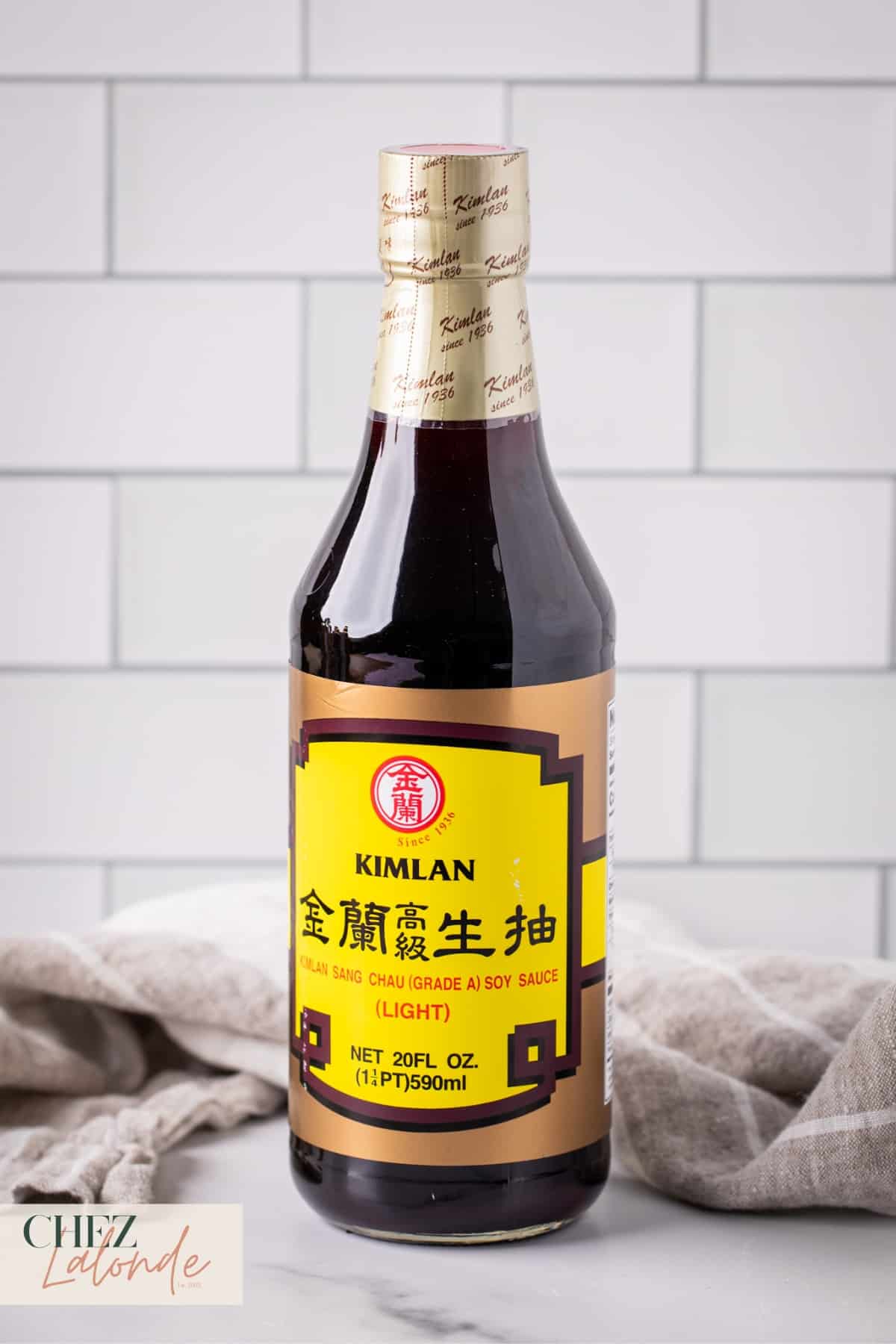
Recommended Brand: Look for reputable brands like Lee Kum Kee, Pearl River Bridge, or Kimlan for quality Chinese soy sauce.
Description: Chinese soy sauce, or light soy sauce, is a fundamental ingredient in Chinese cuisine. It is a thin, amber liquid made from fermented soybeans and wheat.
Flavor Profile: Chinese soy sauce delivers a balanced blend of saltiness, umami, and a subtle hint of sweetness. It enriches dishes by adding depth to their flavors.
Common Application: This soy sauce is ideal for seasoning and marinating. Use it in stir-fries, marinades, dipping sauces, and soups to elevate flavors and create well-rounded dishes.
Recommended Recipe: Check out the Asian Cuisine section. Most of my savory recipes in this section use Soy sauce.
Dark Soy Sauce (老抽)
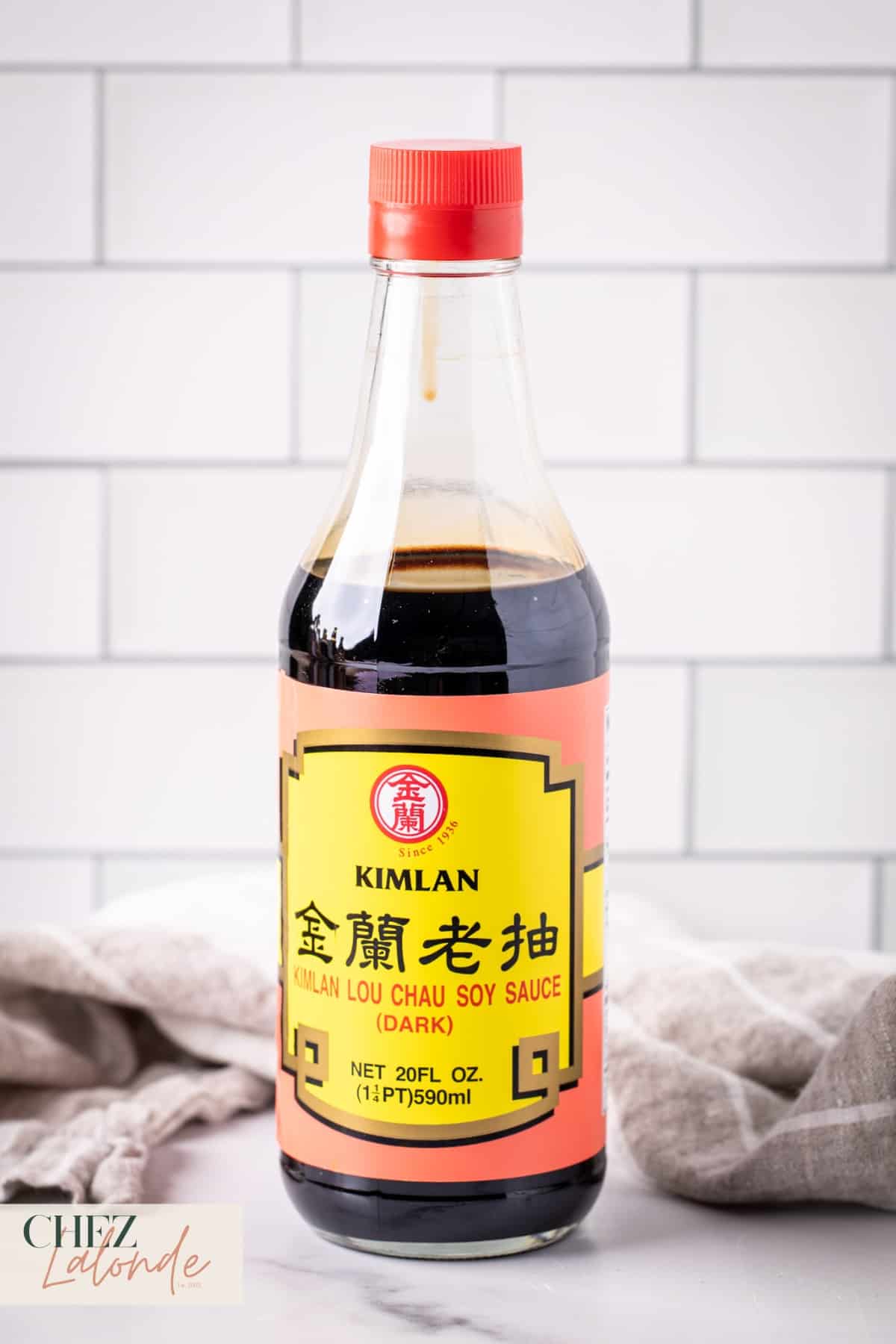
Recommended Brand: My go-to brands are Kimlan and Peral River Bridge. They are known for consistent flavor and authenticity.
Description: It has a rich, deep color and thicker consistency than regular soy sauce. It is brewed through a longer fermentation process, giving its distinctive properties.
Flavor Profile: It brings a bold umami flavor with deep savory notes. Its sweetness adds complexity to dishes, while its saltiness is more subtle than regular soy sauce.
Common Application: It enhances dishes with color and flavor, making it ideal for marinades, stews, and braised dishes. It creates a caramelized glaze for meats and boosts food appearance.
Recommended Recipe: Check out the Asian Cuisine section. Most of my savory recipes in this section use Dark soy sauce.
Oyster Sauce (蠔油)
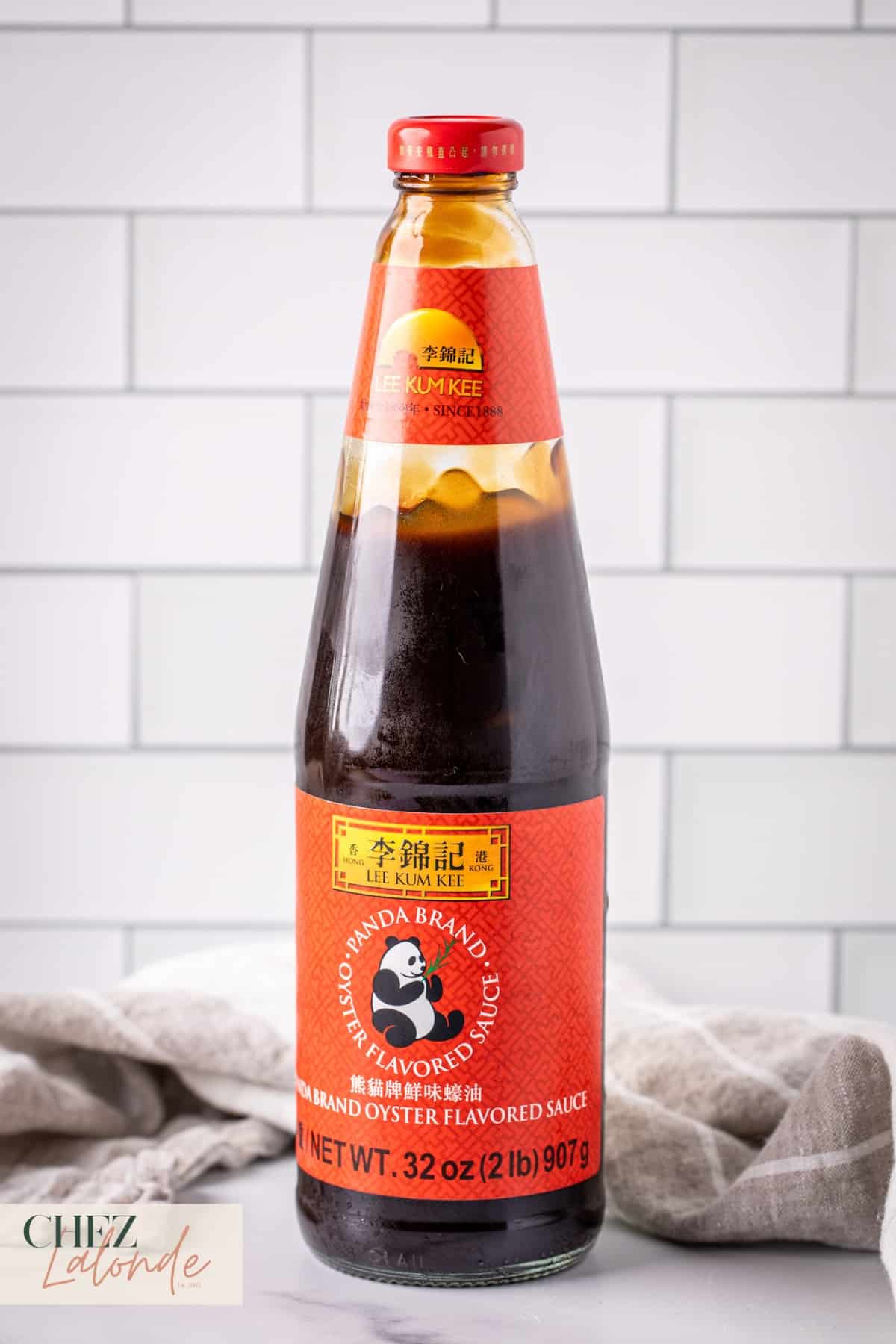
Recommended Brand: I would only recommend the Lee Kum Kee brand.
Description: It is a savory and glossy condiment made from oyster extracts, soy sauce, and seasonings. It’s a dark brown liquid with a rich texture, known for its distinctive umami flavor.
Flavor Profile: It boasts a robust umami character with a subtle hint of saltiness. Its savory depth adds complexity to dishes, making it an essential flavor enhancer.
Common Application: It’s a staple in stir-fries, fried rice, and noodle dishes. It also works well in marinades. It is known for amplifying the savory element in a dish.
Recommended Recipe: I used it in the Asian garlic sauce to pair with Air Fryer Tofu.
Sesame Oil (麻油)

Recommended Brand: I have tried different brands, but Kadoya is the only brand I use and recommend now. I usually stock the 56 fl oz size at home.
Description: It is derived from toasted sesame seeds and is a fragrant and nutty oil with a distinctive nutty aroma. It ranges in color from golden to dark brown.
Flavor Profile: Sesame Oil offers a robust nuttiness and a slightly bitter undertone.
Common Application: Sesame Oil is a finishing touch that enhances the aroma of cooked dishes. It’s commonly drizzled over stir-fries or noodles for added depth and fragrance.
Recommended Recipe: Adding Sesame oil to your Fried rice is a must.
Shaoxing Wine (紹興酒)

Recommended Brand: I don’t have a specific preference. Feel free to experiment with different options. One option, the “Hsiang Brand,” is commonly available in most Asian supermarkets.
Description: It is a traditional Chinese rice wine with a distinctive aroma. Named after the city of Shaoxing, it has a clear or amber hue and is often aged for a deeper flavor.
Flavor Profile: It boasts a mellow, slightly sweet aroma with earthy undertones. It enriches and enhances dishes’ overall flavor.
Common Application: It is versatile in marinating, stir-fries, and braised dishes. Its unique aroma brings out the flavors while tenderizing ingredients.
Recommended Recipe: Try this Chinese Drunken Chicken recipe from The Woks Of Life.
Chinese Rose Wine (玫瑰露酒)
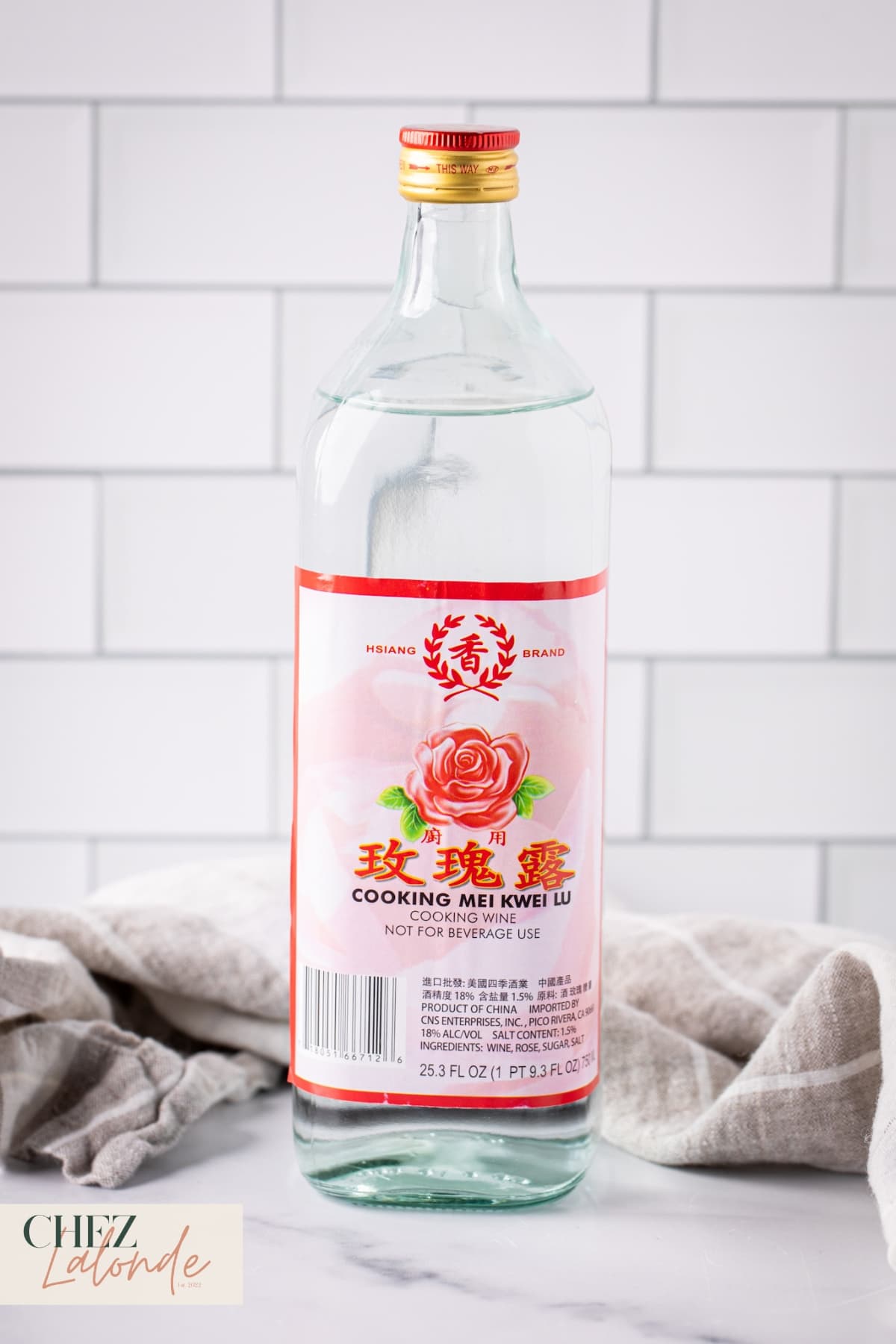
Recommended Brand: I don’t have a specific preference. For quality Chinese Rose Wine, consider exploring local Asian supermarkets and specialty liquor stores.
Description: It is known as Mei Gui Lu Wine, a fragrant rice wine infused with rose petals. It features an enticing floral aroma.
Flavor Profile: It offers a gentle sweetness complemented by the soothing essence of roses. Its floral notes add a unique dimension to dishes.
Common Application: It is often used to enhance the flavor and aroma of braised dishes, cured sausages, and BBQ roast meat. It imparts a floral undertone that elevates the overall taste.
Recommended Recipe: This cooking wine is essential for marinating Char Siu (Chinese BBQ Pork)
Fish Sauce (魚露)
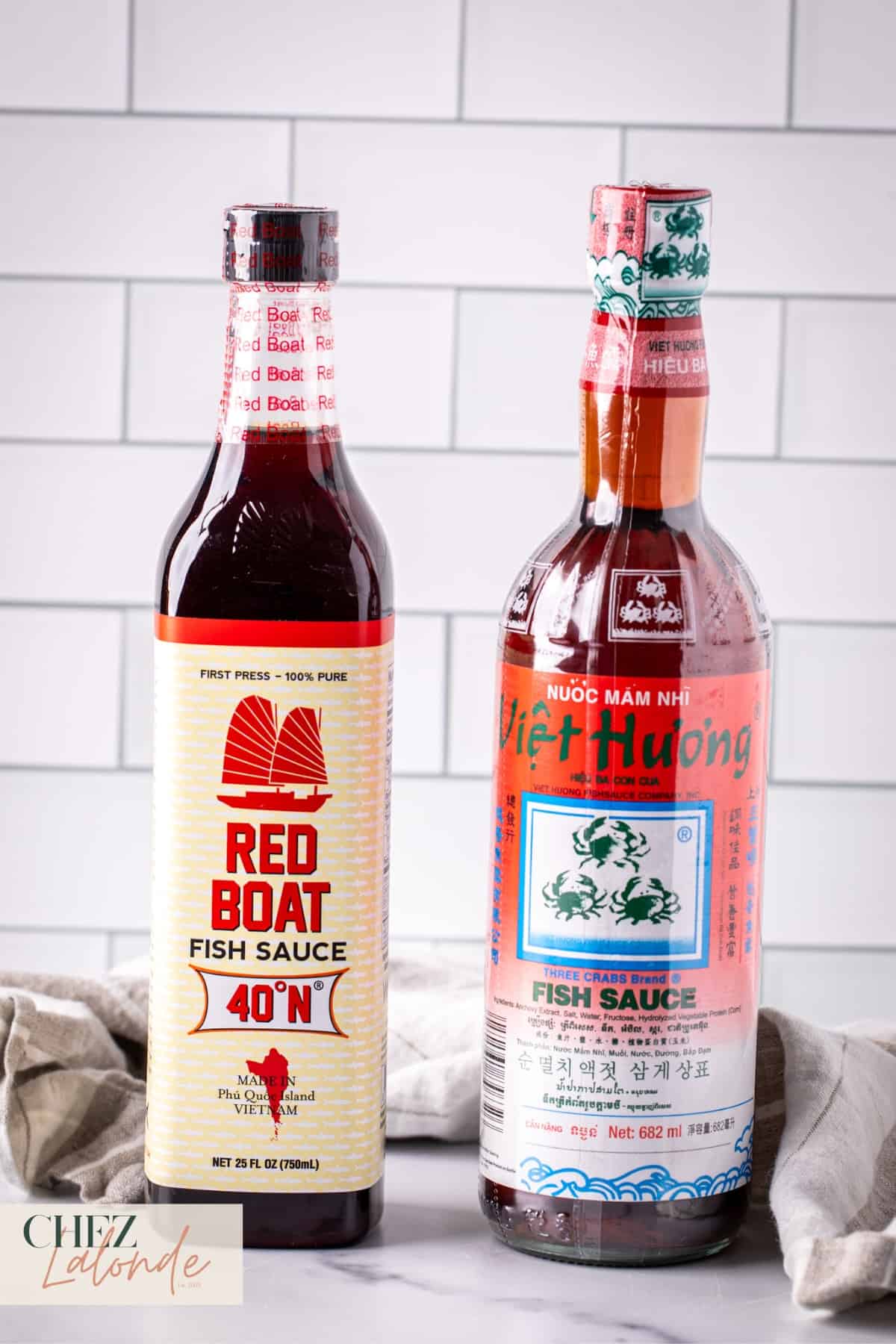
Recommended Brand: I prefer either the Red Boat or Three Crabs Brand.
Description: Fish Sauce is a pungent and savory liquid from fermented anchovies or krill. It has a golden to amber color and is a staple in many Southeast Asian cuisines.
Flavor Profile: Fish Sauce delivers a bold umami punch with intense saltiness. Its distinct fermented aroma adds depth and complexity to dishes.
Common Application: It is a versatile ingredient, adding depth to soups, stir-fries, and dipping sauces. It’s also a key component in marinades and dressings in most Thai and Vietnamese cuisines.
Recipe Recommendations:
Rapeseed Oil (菜籽油)
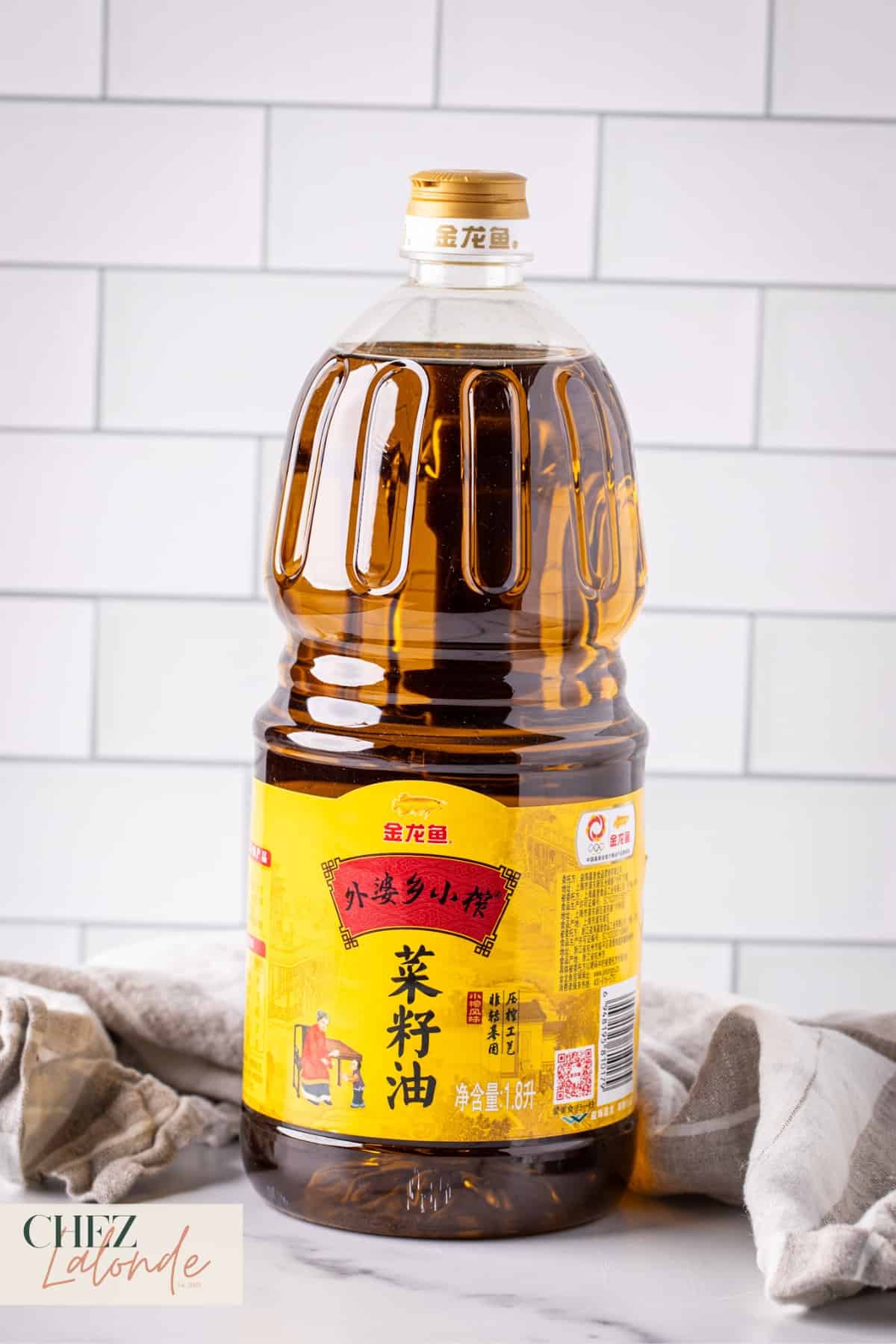
Recommended Brand: The brand “Arawana 金龍魚” is the one I came across at my local Ranch 99 Asian supermarket. However, if you can’t locate this brand, rest assured that Rapeseed oil is synonymous with Canola oil.
Description: It is derived from crushed rapeseed plants. It is light golden and prized for its neutral taste and high smoke point.
Flavor Profile: Rapeseed Oil offers a mild, neutral taste, making it ideal for cooking without overpowering the ingredients’ natural flavors.
Common Application: Rapeseed Oil’s high smoke point suits it for various cooking methods, including frying, stir-frying, sautéing, and infusing chili oil.
Recommended Recipe: I particularly use this oil to make my Chili oil. Do not try to use any other kind of oil; it will not result in the same flavor.
Chinkiang Vinegar/ Chinese Black Vinegar (鎭江香醋)
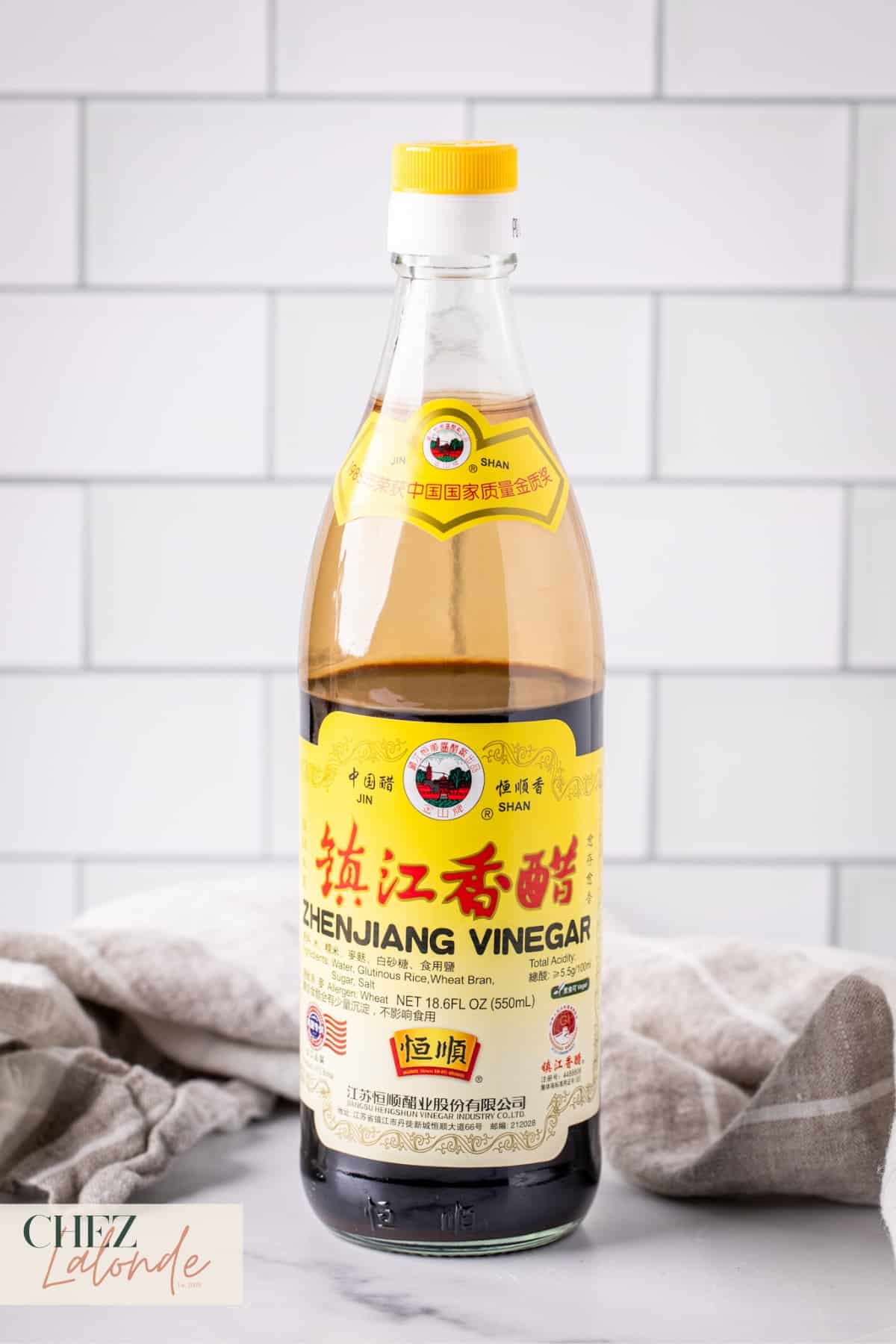
Recommended Brand: For quality Chinkiang Vinegar, consider brands like Gold Plum or Chinkiang. These brands are known for producing authentic and flavorful rice vinegar.
Description: It originates from “Chinkiang 鎭江” in China and is a dark, aged rice vinegar. It is made from fermented glutinous rice. It is known for its malty taste, deep black hue, and complex, full-bodied flavor profile.
Flavor Profile: It offers a balanced blend of tanginess and mild sweetness. Its aged nature contributes to a rich, mellow undertone that adds depth to dishes.
Common Application: It is a versatile black vinegar used in marinades, braising meat, dressings, and dipping sauces.
Recommended Recipe: Try this Sweet and Sour Ribs recipe from Omnivore’s Cookbook.
Chinese Red Vinegar
(大红浙醋)
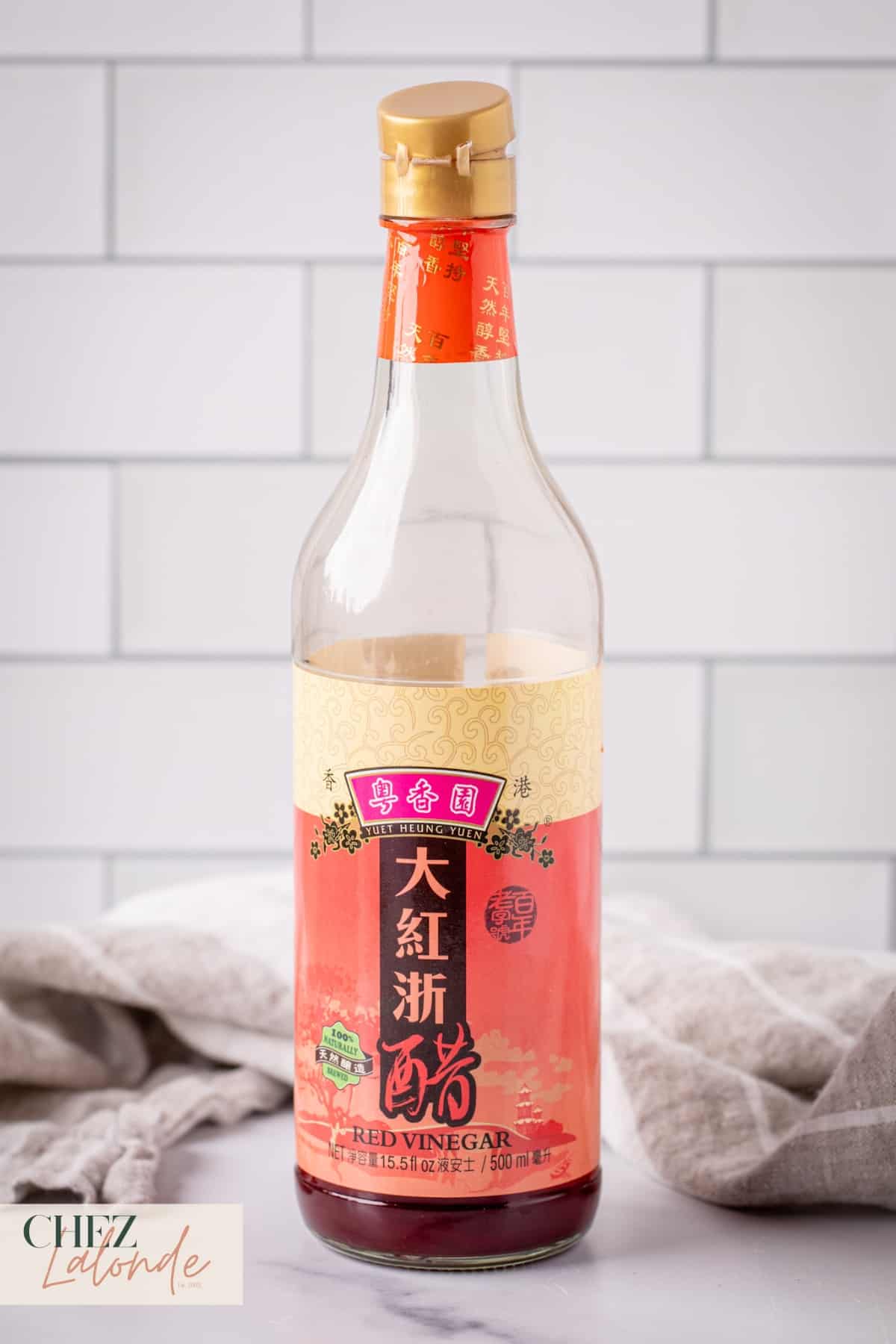
Recommended Brand: You can choose between Koon Chun, or Yuet Heung Yuen is my go-to.
Description: It springs from red yeast rice, a fermented rice variety imbued with a striking reddish-purple hue. Unlike everyday distilled white vinegar, red vinegar exhibits a gentler acidity, making it stand out.
Flavor Profile: It boasts a well-rounded taste, combining sweetness and tanginess. Its deep, complex flavor enhances various dishes.
Common Application: You’ll commonly find this vinegar gracing the tables of Cantonese eateries, accompanying seafood soups, or used for dipping dumplings. We also use it in dressing or other dipping sauces as well.
Recommended Recipe: Try this Chinese Fried Pigeon recipe from The Woks of Life.
Chinese Rice Vinegar (米醋)

Recommended Brand: I like the Pearl River Bridge brand.
Description: It is derived from fermented rice and is a cornerstone in Asian cooking. Its clear appearance sets it apart from its black counterpart, offering a milder flavor.
Flavor Profile: It presents a gentle tanginess with a subtle sweetness. Its flavor is less robust compared to other types of rice vinegar.
Common Application: It contributes acidity to dipping sauces and dressings. However, in Chinese BBQ pork, a touch of this vinegar works its magic, elevating the crispiness of the grind.
Recipe Recommendations:
Preserved Chili Bean Curd (腐乳)
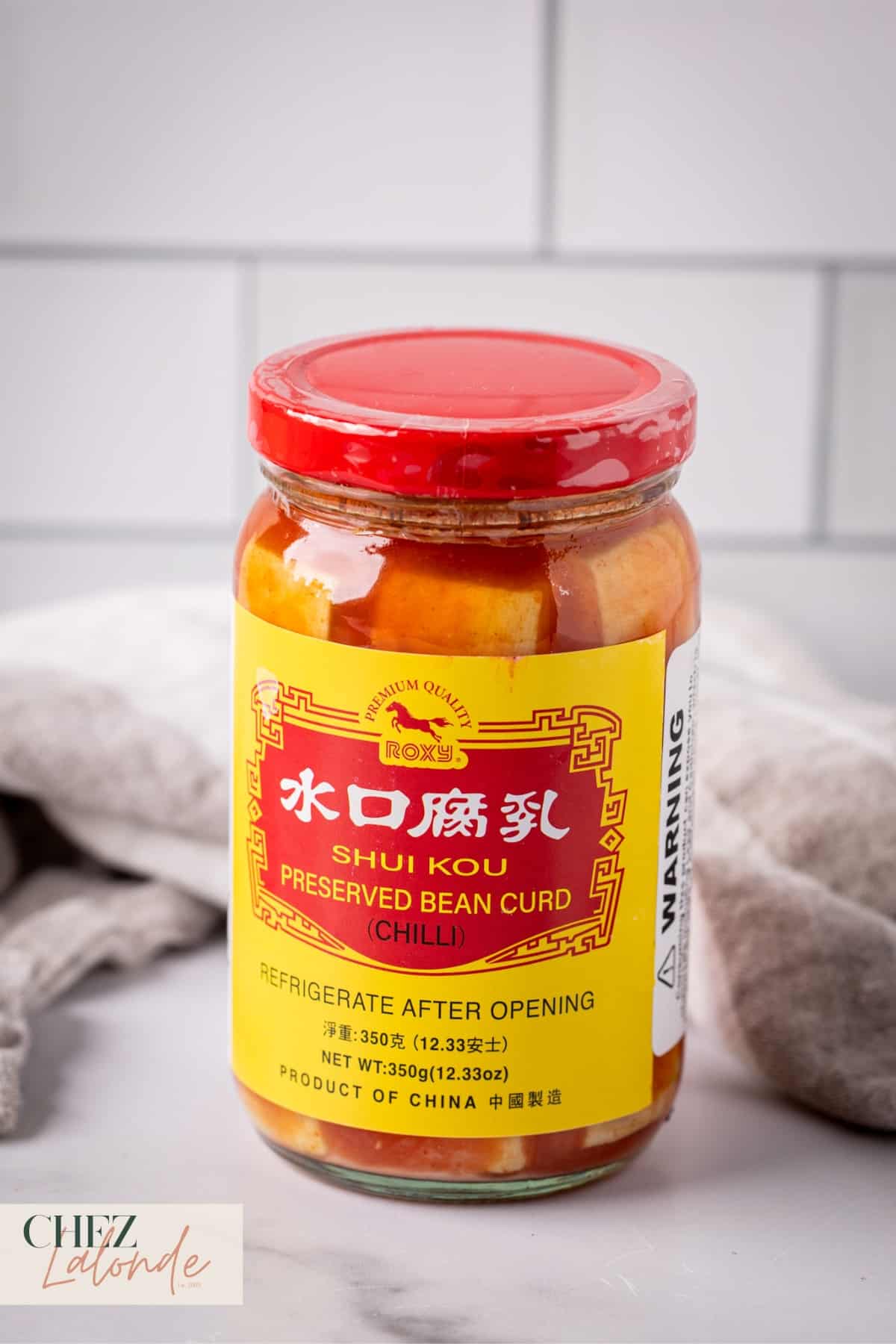
Recommended Brand: Although there are many to choose from, “Shui Kou” is still my #1 go-to brand.
Description: It is a fermented tofu product infused with chili, creating a flavorful and aromatic condiment. It comes in cubes submerged in a jar of brine solution.
Flavor Profile: It boasts a complex taste, combining tofu’s creaminess with chili’s boldness. Its rich umami and spiciness make it a versatile addition to dishes.
Common Application: In Cantonese-style cuisine, we use it to add depth to stir-fries or steamed dishes. My favorite is stir-frying a few cubs of bean curd with water spinach. Its unique texture and flavor create a delightful contrast when incorporated into various recipes.
Recommended Recipe: Try this Water Spinach Stir-Fry recipe from Red House Spice.
Fermented Red Bean Curd (南乳)
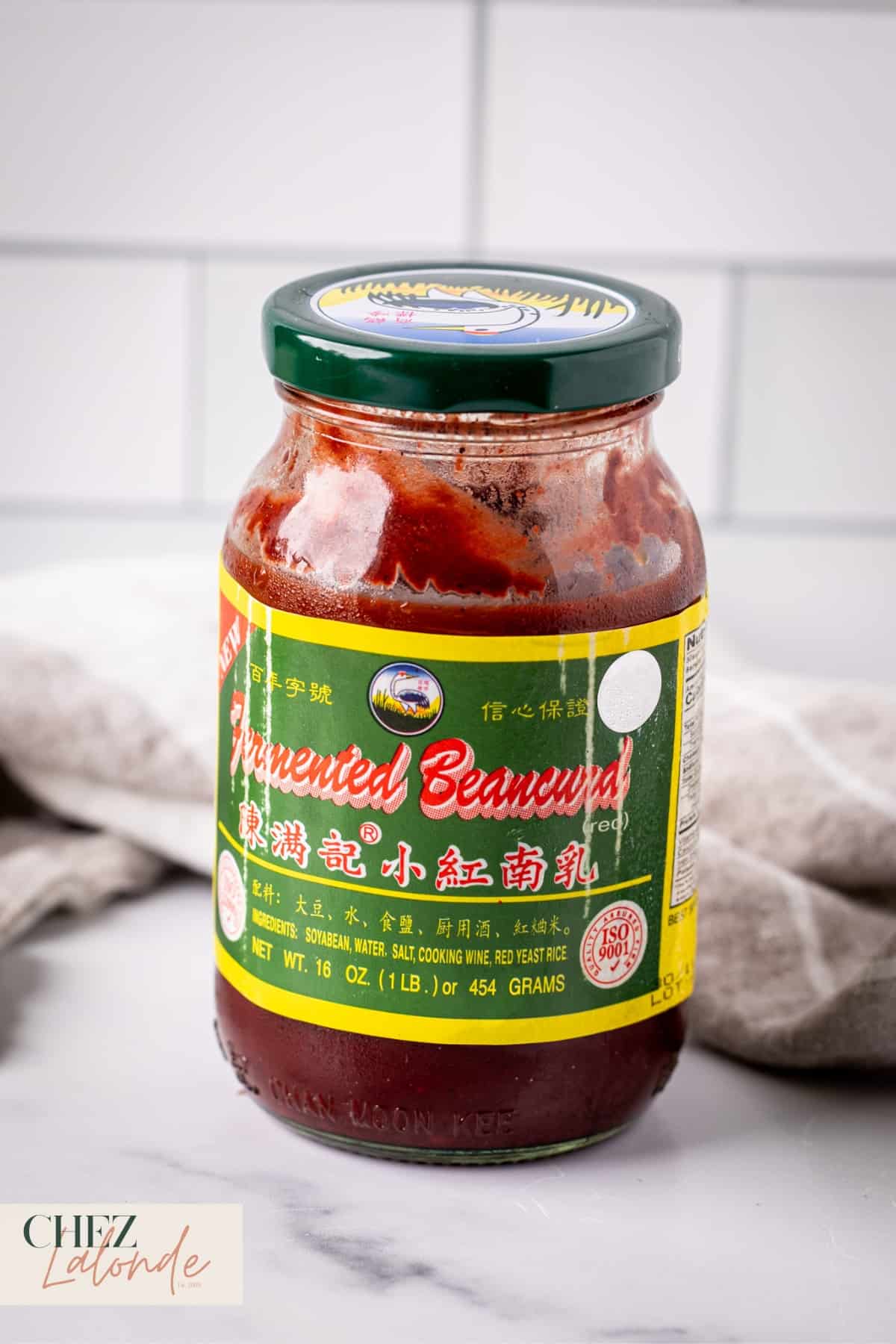
Recommended Brand: This Hong Kong Brand, “Chan Moon Kee,” is the one I currently use at home. But I see many are using this brand named Wangzhihe.
Description: It is a preserved tofu delicacy aged in red brine. Its distinctive red color and crumbly texture set it apart as a unique ingredient.
Flavor Profile: It boasts a strong umami flavor with a hint of sweetness. Its rich taste and aroma make it a bold addition to a dish.
Common Application: Fermented Red Bean Curd is often used to marinate meats, imparting its intense flavor and vibrant color. It’s a common ingredient in recipes like Chinese BBQ Pork (Char Siu).
Recommended Recipe: Adding a piece of this red bean curd in the Char Siu Marinate is a way to enhance the signature red color of the BBQ pork.
Hoisin Sauce (海鮮醬)

Recommended Brand: Consider brands like Lee Kum Kee for quality Hoisin Sauce. It comes in different packages, so pick one that matches your need.
Description: It is a thick, savory, and slightly sweet condiment made from soybeans, garlic, vinegar, and spices. Its dark brown color and rich consistency make it a versatile flavor enhancer.
Flavor Profile: It delivers a harmonious balance of sweet, salty, and umami flavors. Its depth and complexity make it a staple in various Asian dishes.
Common Application: It shines in stir-fries, marinades, and dipping sauces. It’s essential in Peking Duck, Char Siu, and Vietnamese Phở noodle soup.
Recommended Recipe: I added this sauce to the Chinese BBQ Char Siu Marinate.
Ground Bean Sauce
(磨原豉 or 磨豉醬)
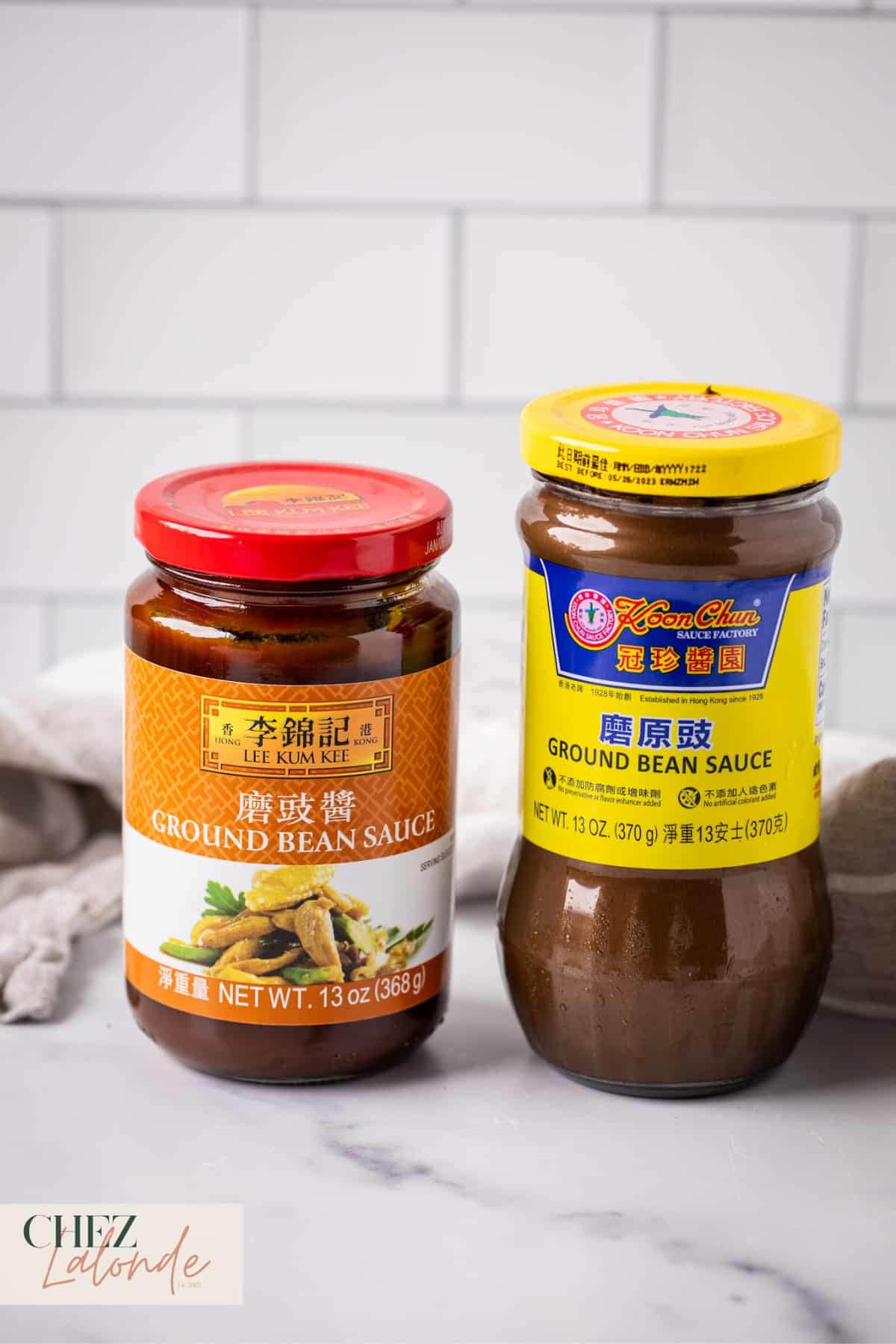
Recommended Brand: Consider brands like Lee Kum Kee or Koon Chun for quality Ground Bean Sauce. These brands offer an authentic taste to enhance your Chinese culinary creations.
Description: It is a salty and mild taste bean sauce made with ground fermented yellow soybeans. It contains other ingredients such as sugar, spices, salt, and sesame oil.
Flavor Profile: It offers a deep umami flavor with a touch of saltiness. It infuses dishes with a profound umami dimension, making it a staple in Chinese cooking.
Common Application: Ground Bean Sauce is a versatile condiment used as a base for stir-fries, braises, and marinades. It adds a robust flavor and depth to the dish.
Recommended Recipe: I added this sauce to the Chinese BBQ Char Siu Marinate.
Char Siu Sauce (叉燒醬)
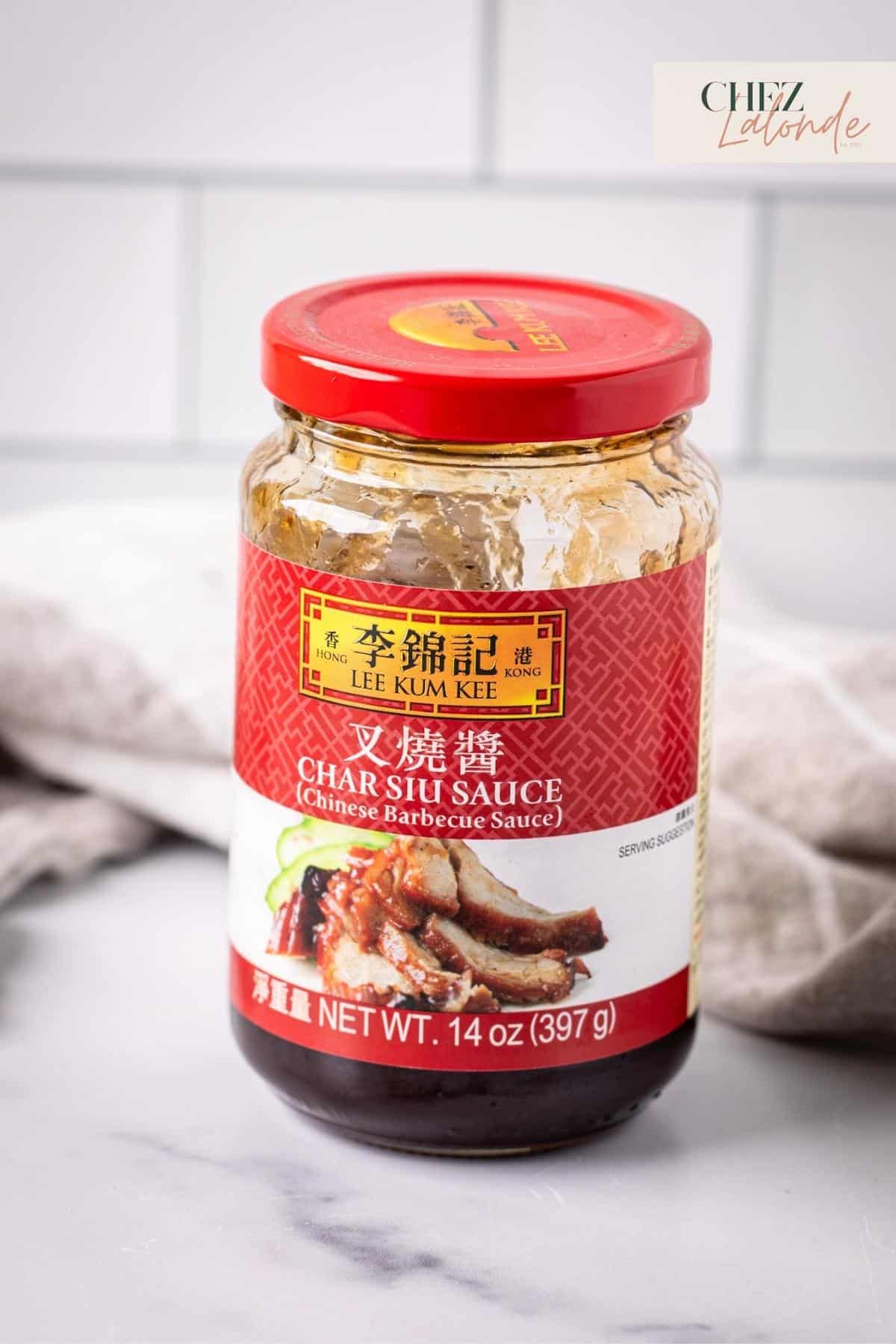
Recommended Brand: Lee Kum Kee is the only Char Siu Sauce brand I use. It offers an authentic taste to traditional Chinese BBQ flavors.
Description: It is a flavorful marinade and glaze that creates the signature Char Siu (Chinese BBQ) flavor. Ingredients included hoisin sauce, soy sauce, honey, and Chinese five-spice powder.
Flavor Profile: It offers a delightful combination of sweet, savory, and slightly smoky flavors. It helps simplify the Chinese BBQ Pork marinade process for home cooks and speed up their Char Siu cooking process.
Common Application: It is primarily used to marinate and glaze meats, particularly pork, for grilling or roasting. It imparts its characteristic flavor and glossy sheen to the dish.
Recommended Recipe: I added this sauce to the Chinese BBQ Char Siu Marinate.
Chinese Lao Gan Ma Spicy Bean Paste (香辣酱)
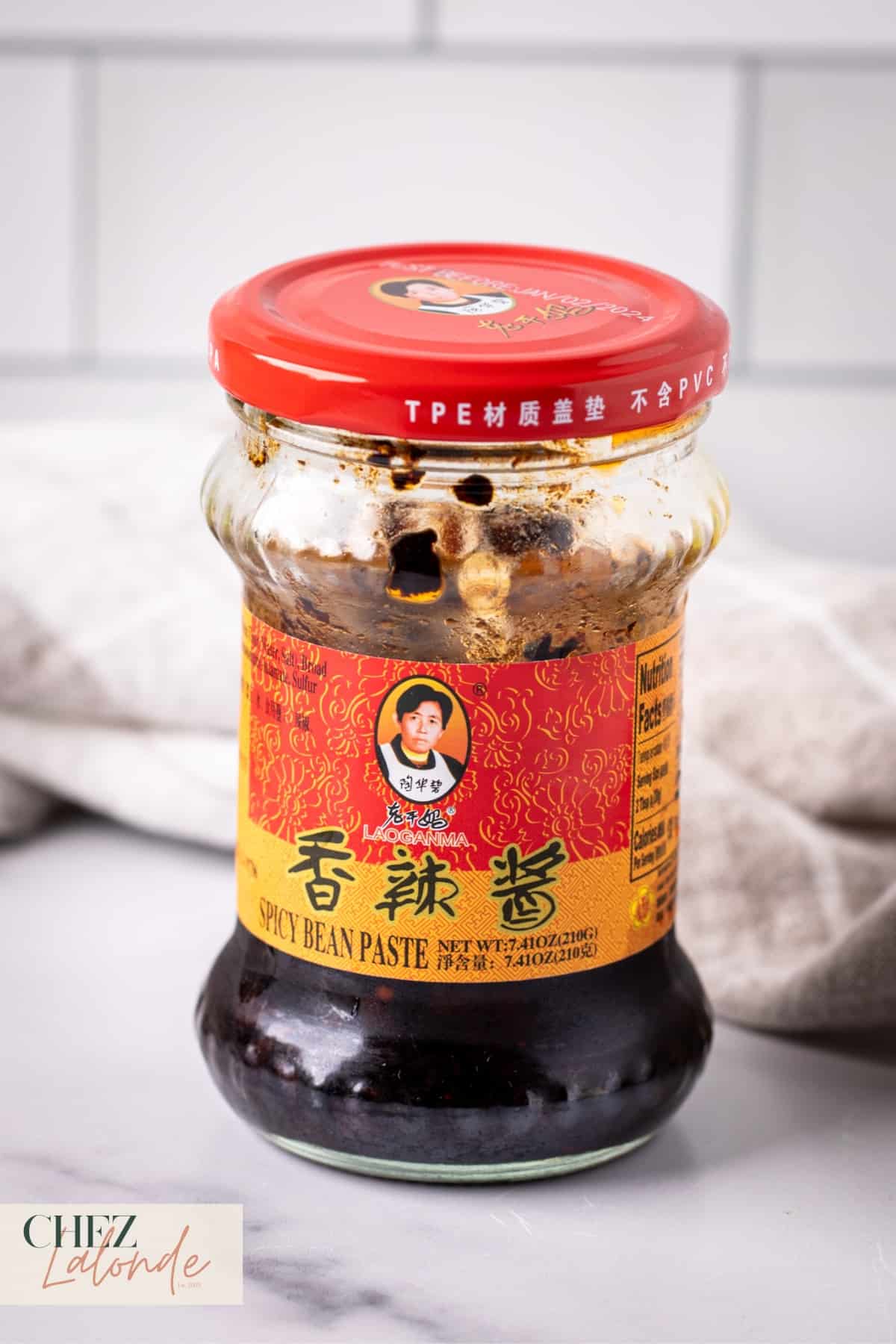
Recommended Brand: I would only consider the original Lao Gan Ma brand. This iconic brand offers various chili condiments with unique flavor profiles.
Description: It is also known as “Old Godmother Sauce.” It is a popular chili condiment infused with soybean and preserved black beans. It comes in various versions, offering diverse levels of spiciness.
Flavor Profile: It delivers a dynamic blend of spiciness and umami from the fermented beans. Its rich depth and heat level enhance a wide range of dishes.
Common Application: It is a versatile sauce in stir-fries, noodle dishes, and dipping sauces. Its fiery kick and distinctive flavor elevate both traditional and modern recipes.
Recommended Recipe: I used this condiment in my Taiwanese Spicy Beef Noodle Soup recipe.
Homemade Chinese Chili Oil (辣椒油)
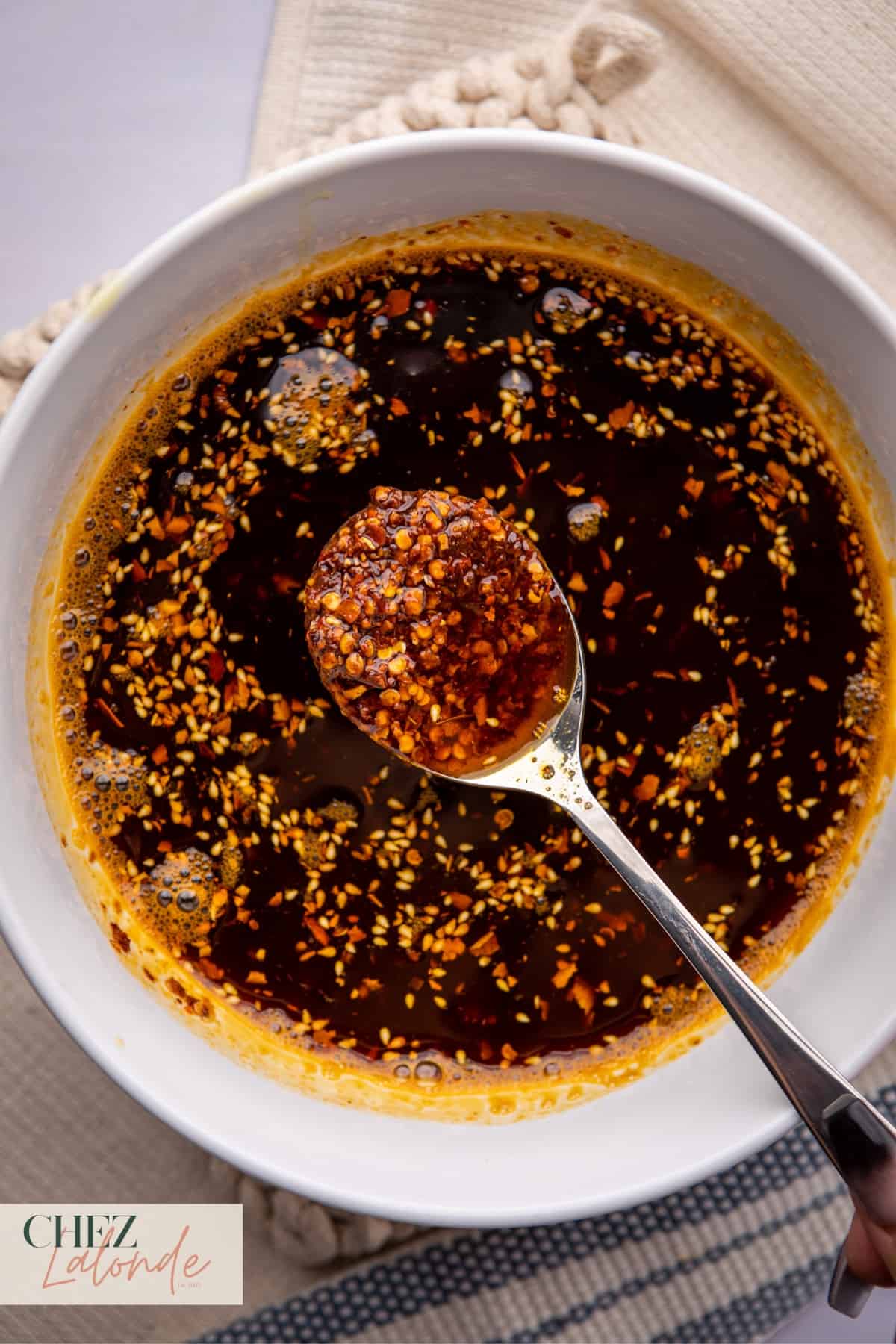
Recommended Brand: My Chinese Chili Oil recipe strikes a delightful balance between flavors, not too spicy. I make around two jars monthly; that’s how quickly my family devours it. And if you’re not into DIY, go for Lee Kum Kee or Lao Gan Ma – both top-notch brands.
Description: It is a versatile and customizable condiment made by infusing oil with Sichuan red chili peppers, Sichuan peppercorns, and other aromatic spices. Its heat level and flavor can be tailored to personal preference.
Flavor Profile: It delivers a bold, fiery kick with layers of spiciness and smokiness. The depth of flavors enhances various dishes.
Common Application: Use it to drizzle over noodles, dim sum, dumplings, and other dishes for a fiery kick. It’s also added to marinades, stir-fries, and dipping sauce to infuse heat and flavor.
Recommended Recipe: I used this condiment in my Asian Cucumber dressing.
Maltose Syrup (麥芽糖)
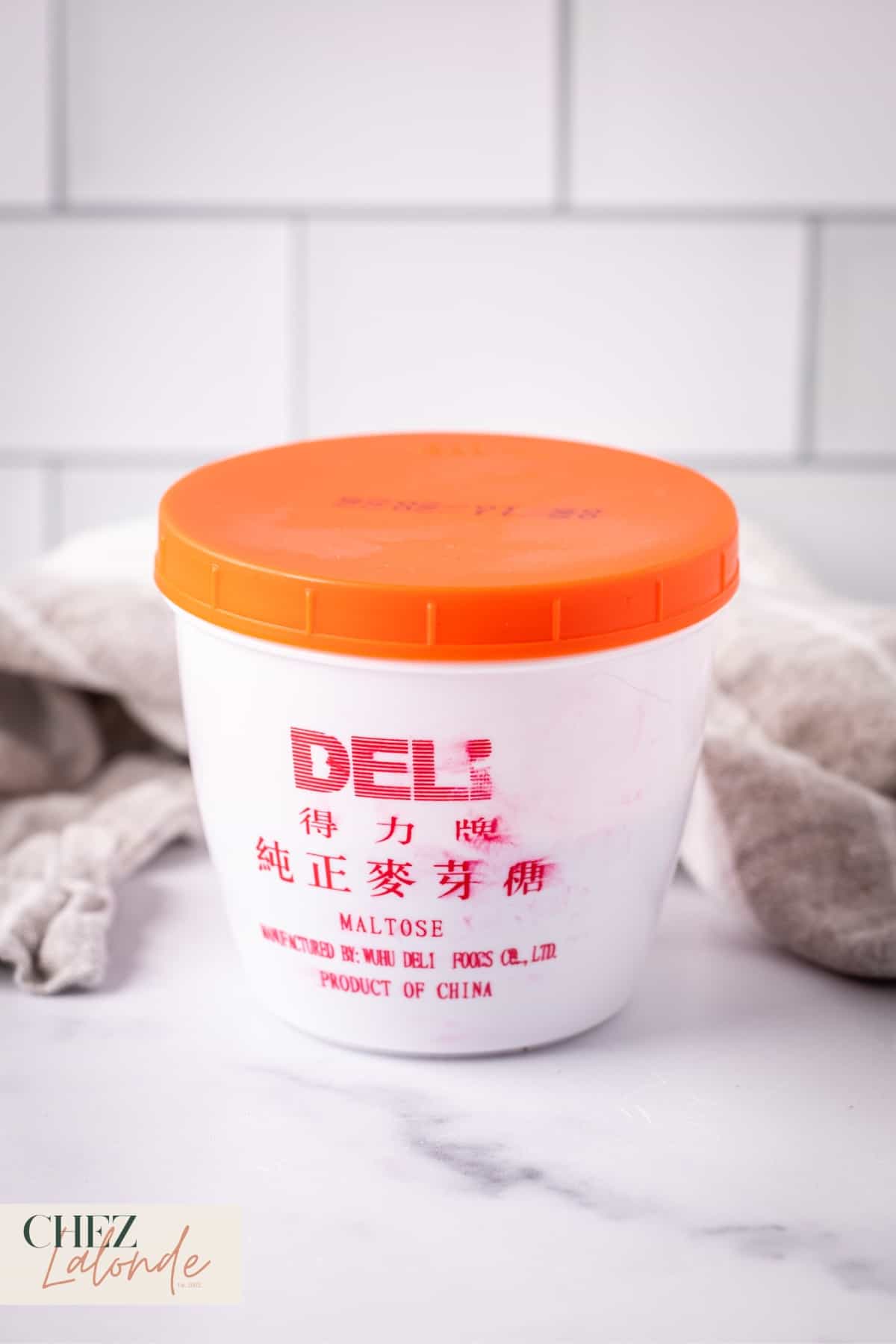
Recommended Brand: Brands vary, but they’re often similar in quality. Look for them in round white plastic tubs with colorful lids, making the brand choice less daunting.
Description: It is a sweet and sticky syrup derived from malted grains, commonly barley or rice. It has a thick consistency and a golden color.
Flavor Profile: It offers a rich sweetness with subtle caramel undertones. Its unique viscosity makes it a versatile ingredient in savory and sweet recipes.
Common Application: It is used in marinades, glazes, and as a sweetener in Chinese dishes. Its ability to impart a glossy finish and amplify flavors is particularly prized in dishes like Char Siu. Sometimes people also apply this in Chinese pastries such as mooncakes or in Candy making.
Recommended Recipe: I used this condiment to glaze the Chinese BBQ Pork.
White Pepper Powder (白胡椒粉)
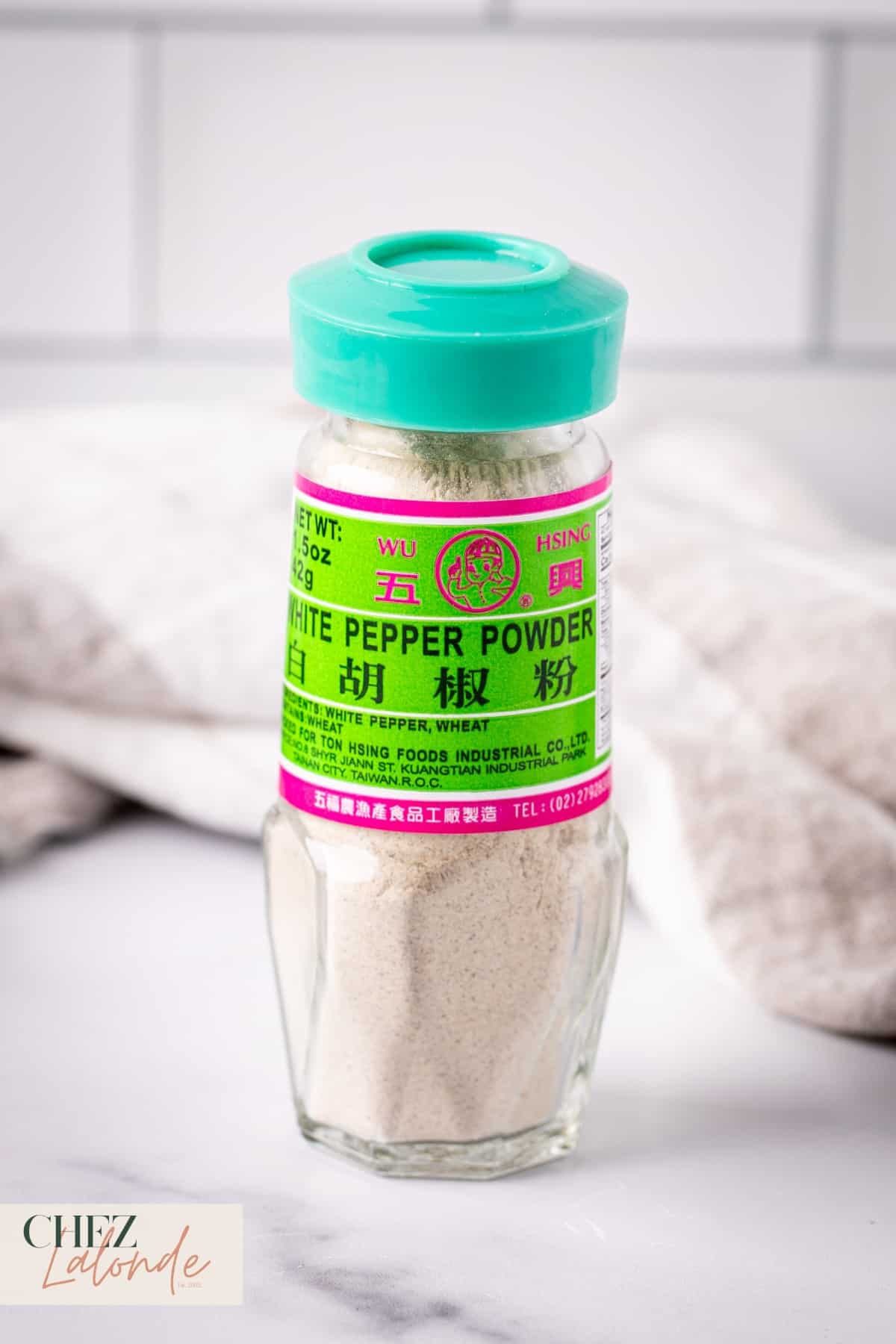
Recommended Brand: This spice is readily available in Asian and American supermarkets. I’ve relied on the Wu Hsing brand for many years, though any brand will work well.
Description: It is derived from ripe pepper berries with their outer skins removed. It has a light color and imparts a milder flavor compared to black pepper.
Flavor Profile: It offers a subtle spiciness with earthy and floral notes. Its delicate taste is ideal for dishes where a milder pepper flavor is desired.
Common Application: It is used to enhance flavors in soups or congee. We also use it in marinades and sauces. Its ability to add warmth without overpowering the flavors makes it a preferred choice.
Recommended Recipe: I used this condiment to season the chicken wings in my Air Fryer Vietnamese-style Chicken wings recipe.
Five Spice Powder (五香粉)
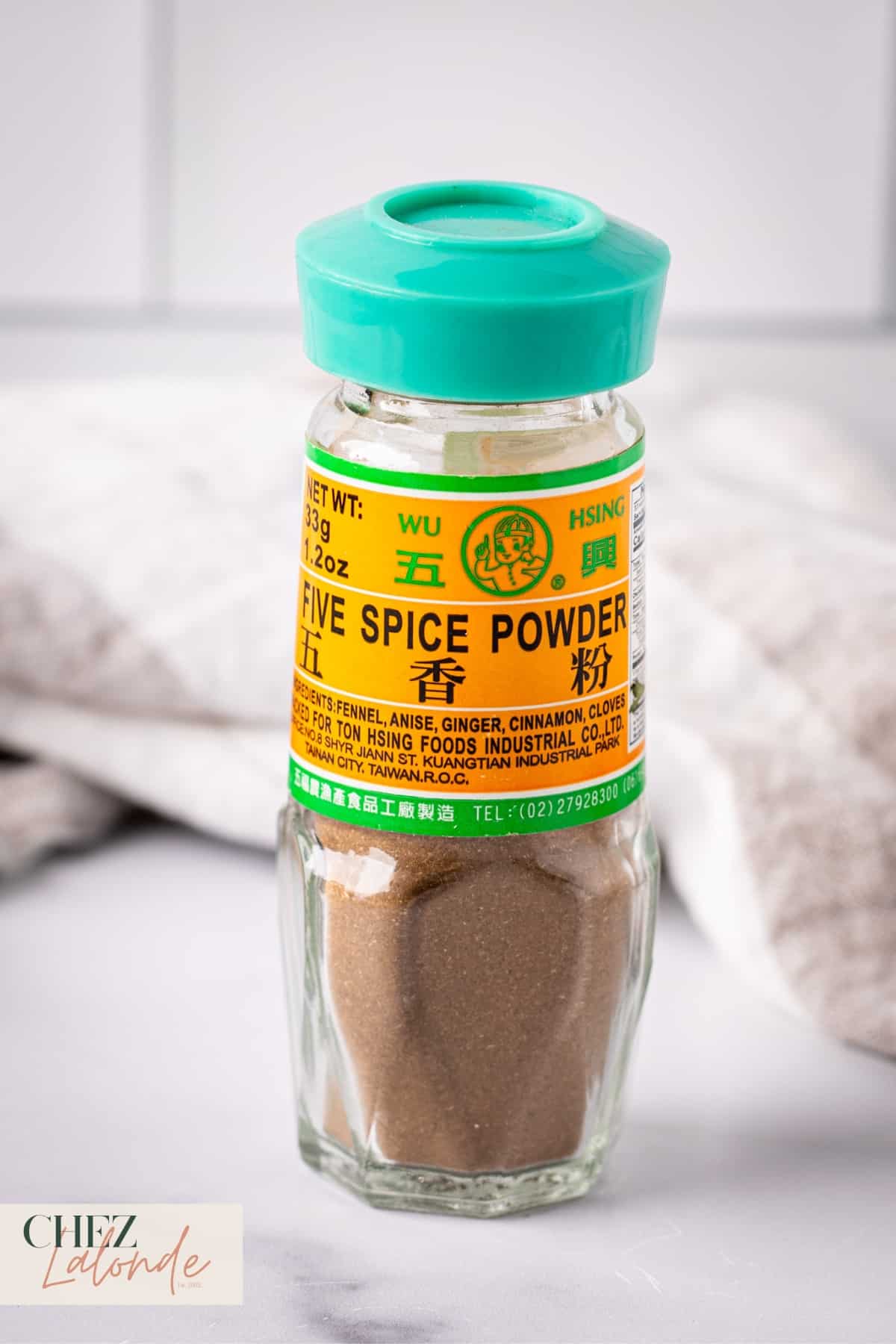
Recommended Brand: You can easily find this spice in Asian and American supermarkets. I’ve used the Wu Hsing brand for a long time, but any brand will do the job effectively.
Description: It is a fragrant blend of ground spices commonly used in Chinese cuisine. It typically includes star anise, cloves, Chinese cinnamon, Sichuan pepper, and fennel seeds.
Flavor Profile: It offers a harmonious mix of sweet, savory, and aromatic flavors. Its unique composition adds depth and complexity to dishes.
Common Application: It marinades meats, a staple in stir-fries, braised dishes, and infused oil. Its ability to balance flavors makes it a versatile ingredient.
Recommended Recipe: It is one of the key ingredients in Cantonese-style BBQs, such as Pork Belly and Char Siu.

FAQs about Chinese pantry staples:
Final Thoughts:
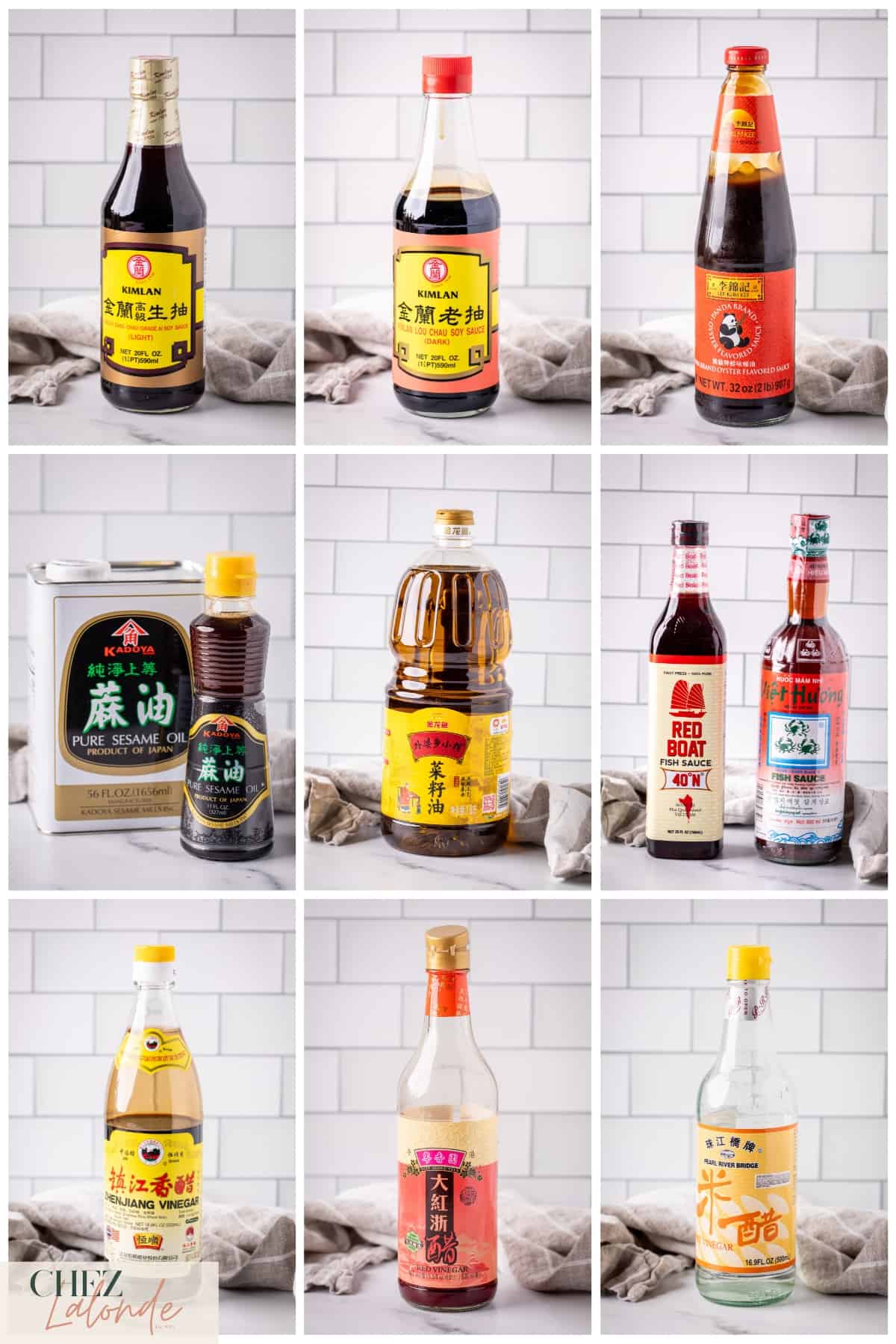
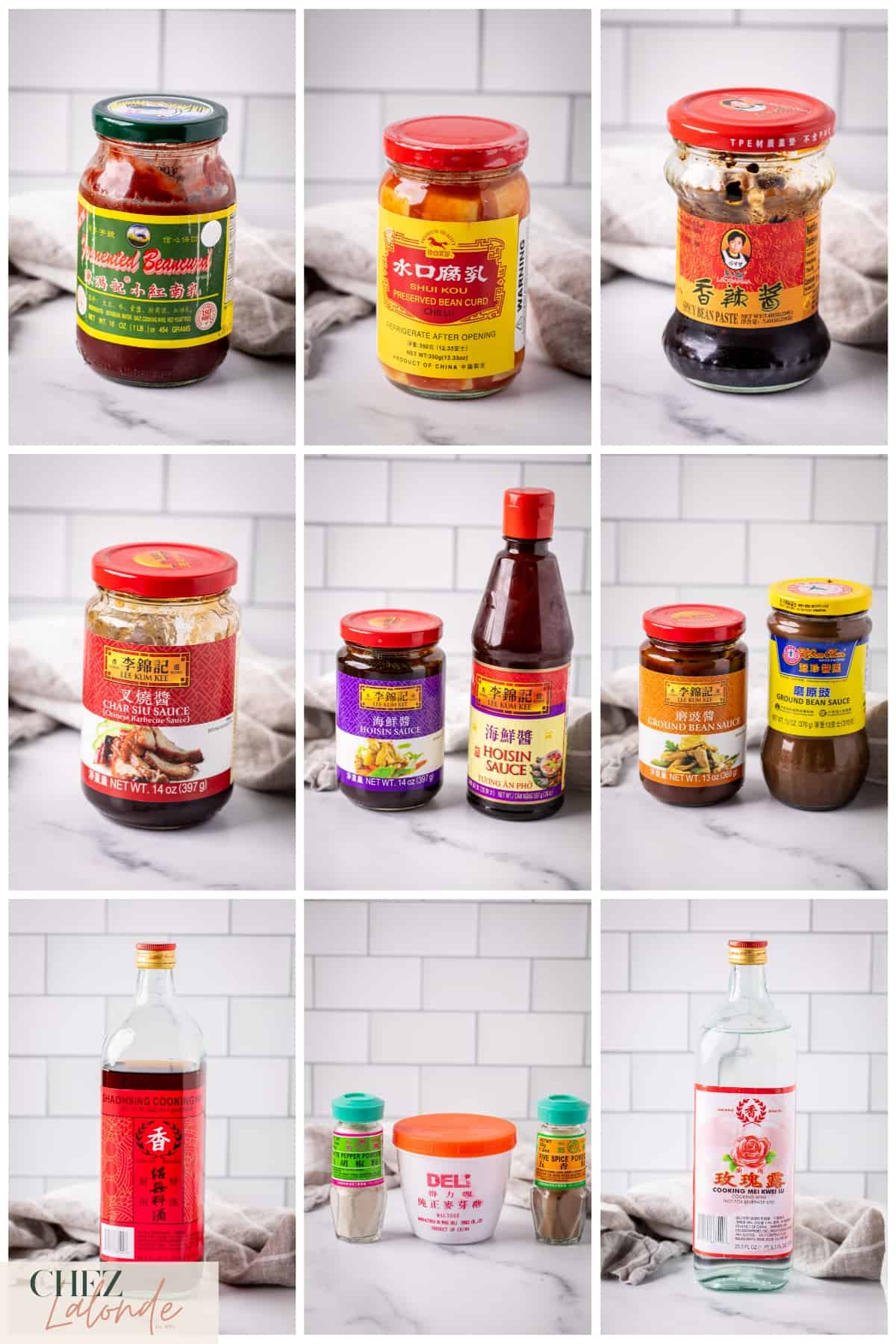
As we wrap up our exploration of these essential Chinese pantry ingredients, I trust you feel well-prepared to navigate Asian supermarkets with confidence. As you progress, be bold in experimenting, tasting, and refining your recipe. Cooking is a voyage of discovery; these ingredients are your guiding companions. Embrace the aroma of dark soy sauce, relish the intricate flavors of fermented bean paste, and savor the fiery allure of chili oil. Let your kitchen become a canvas, immersing your culinary creation and creating your masterpiece dishes at home.
Did you learn a lot from this post?
Your support fuels my passion for sharing the joy of cooking. Join me on Instagram @ChezLalonde for more culinary adventures, and explore my blog for a treasure trove of mouthwatering recipes and kitchen inspiration. Let’s cook, bond, and relish every moment together!



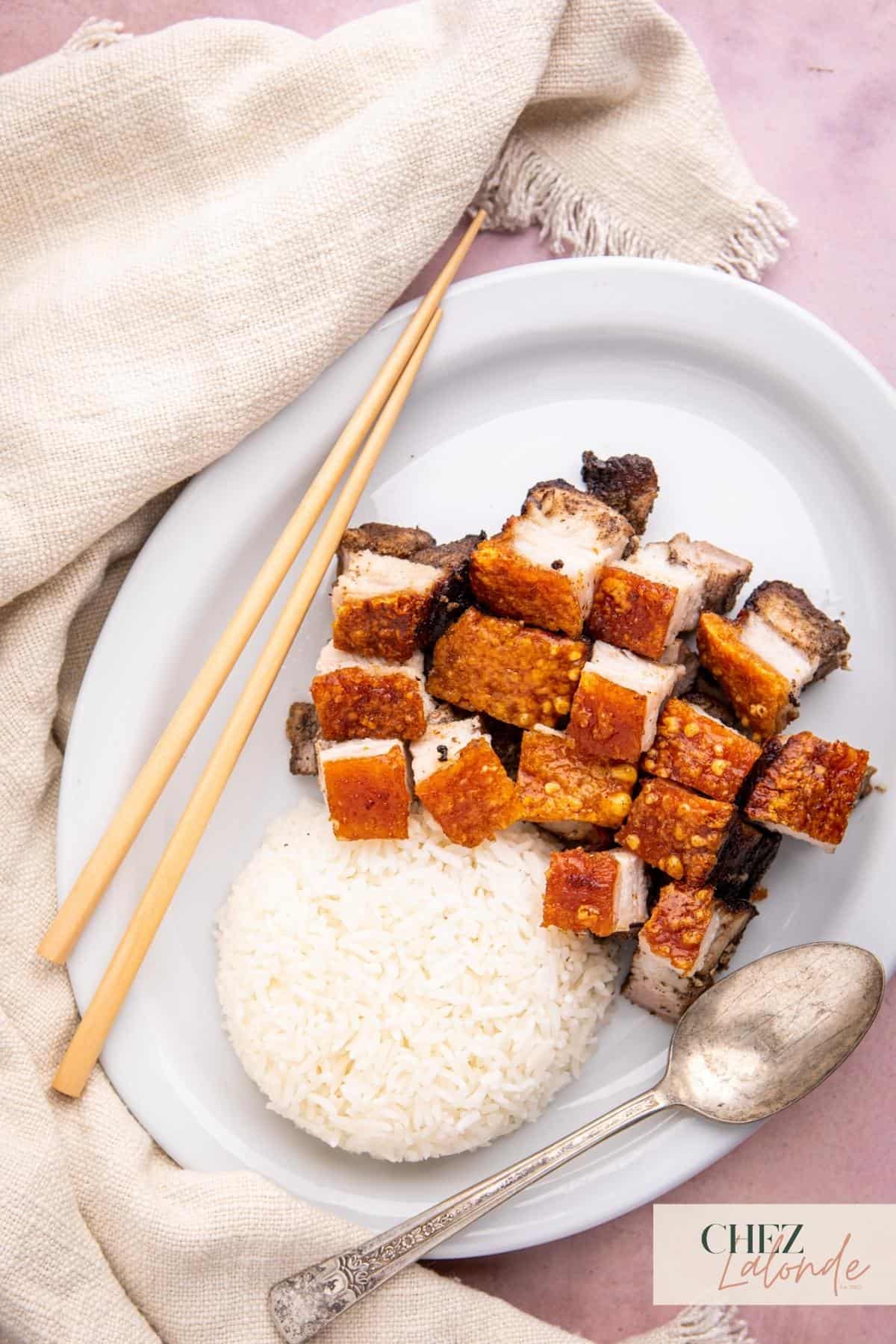
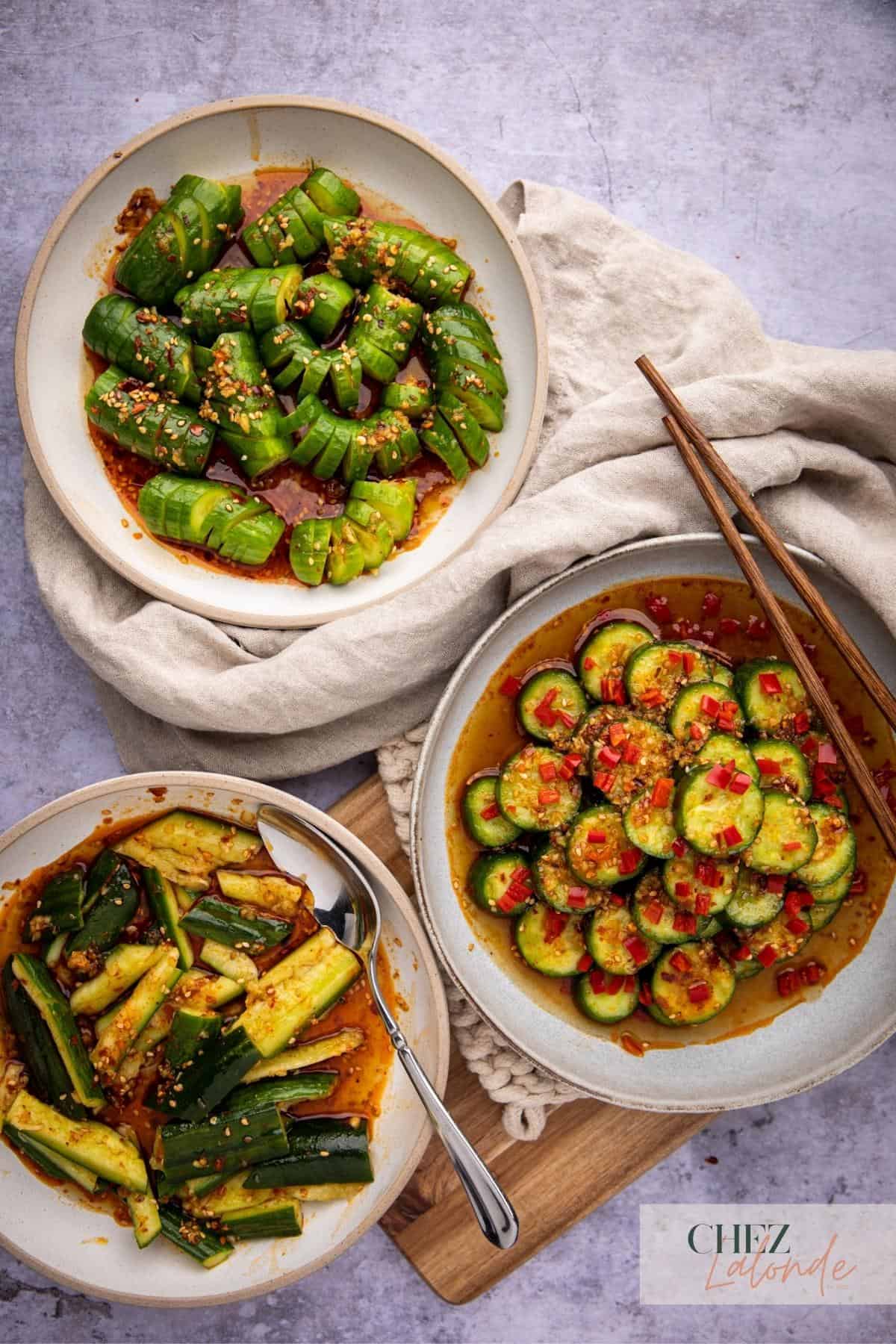
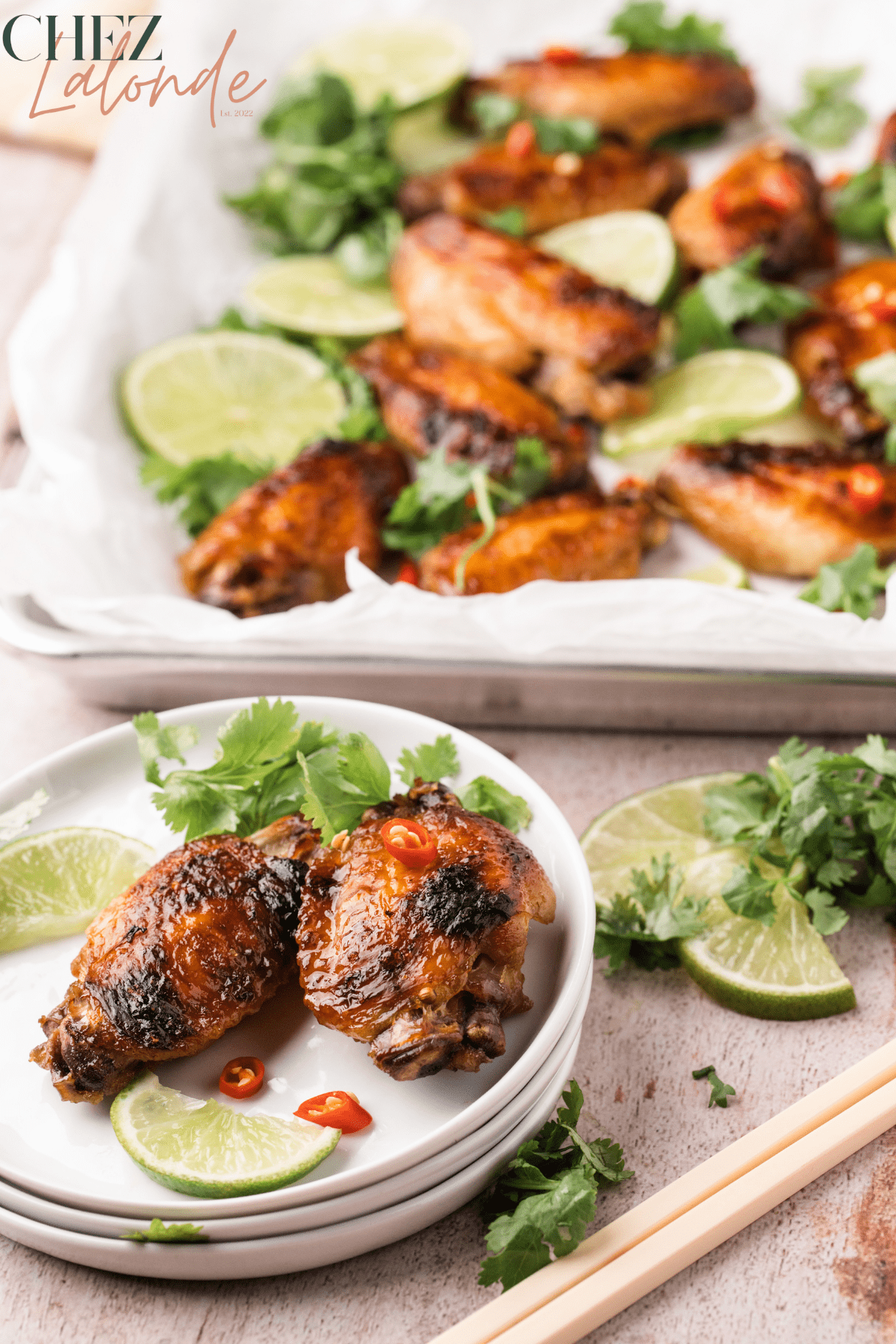
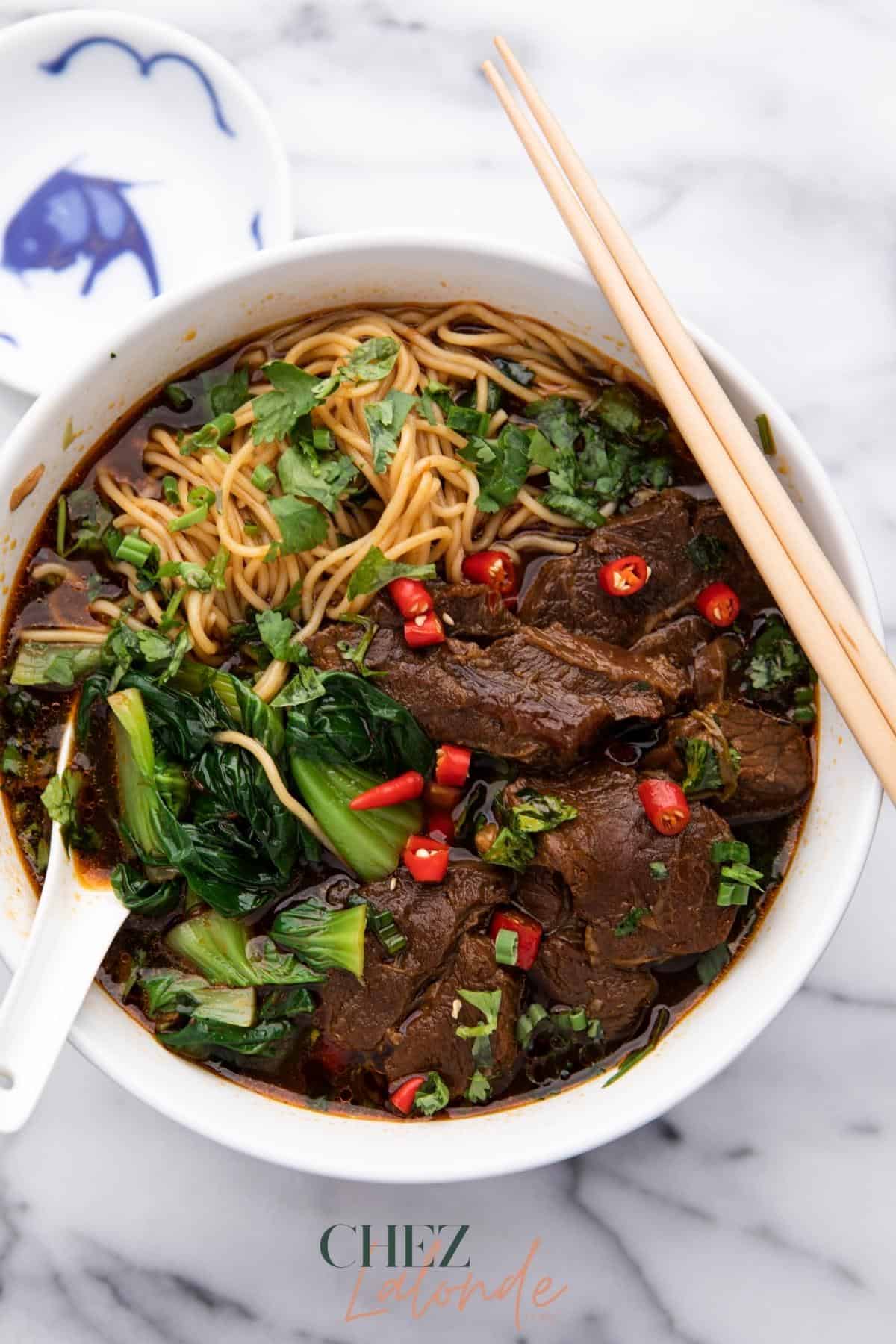

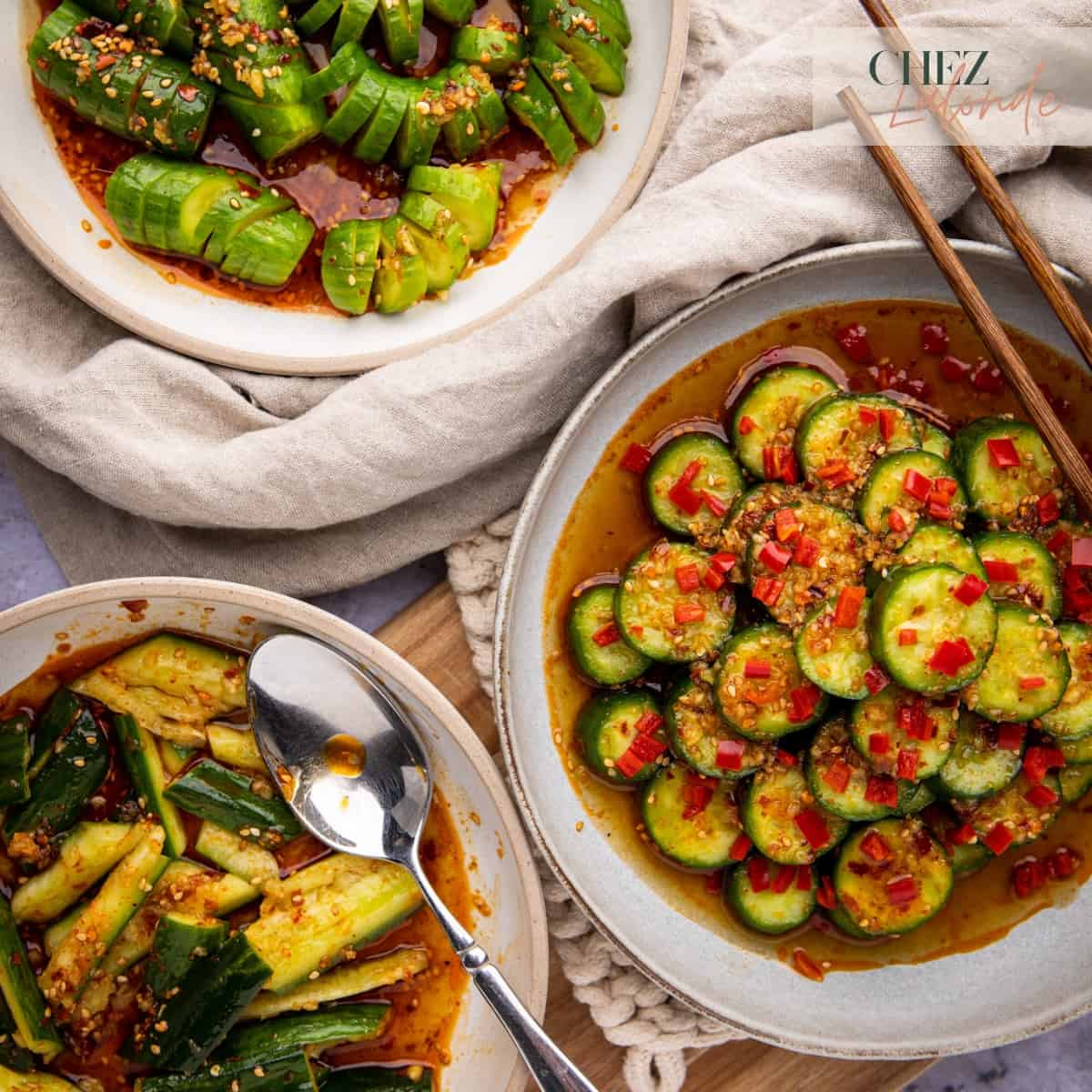
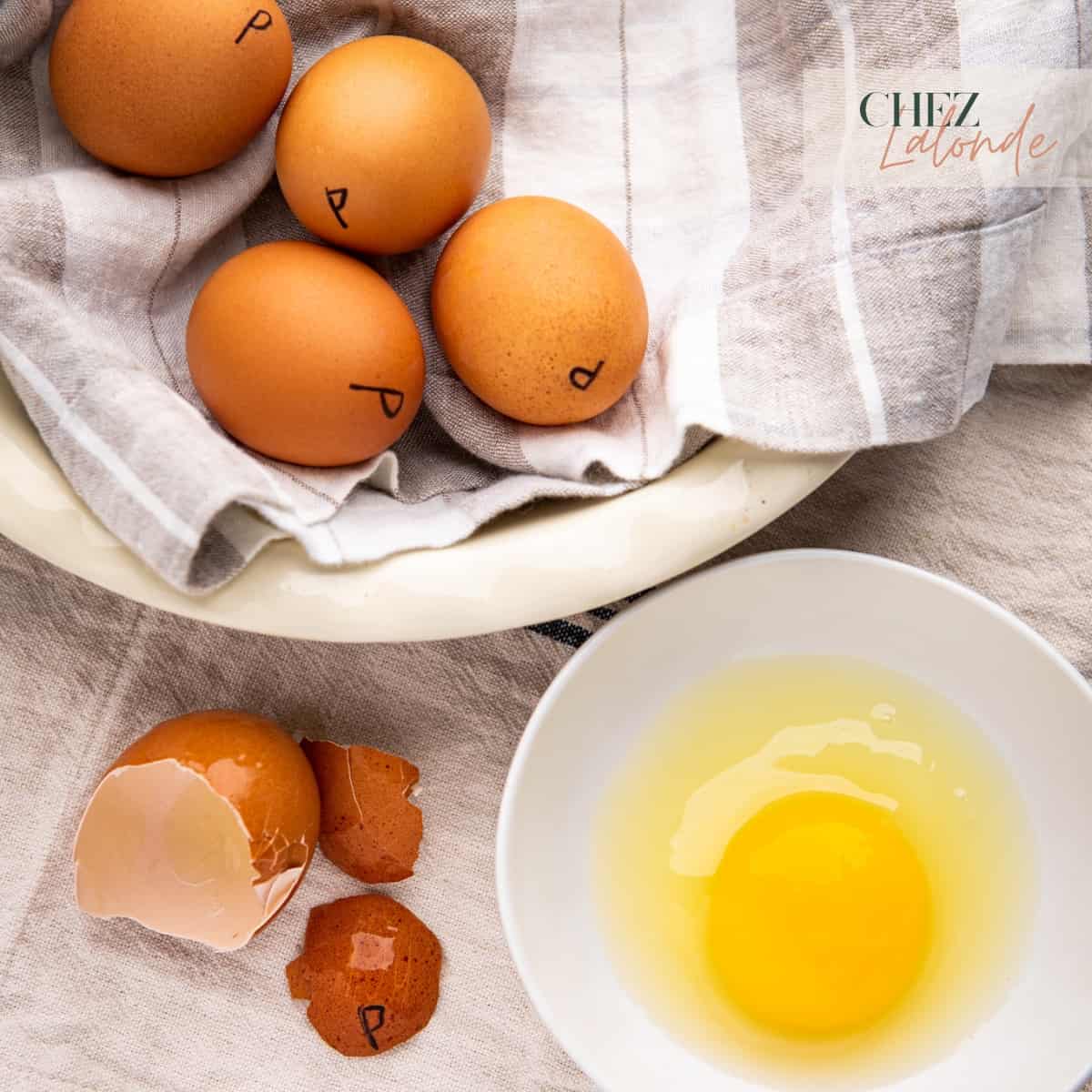
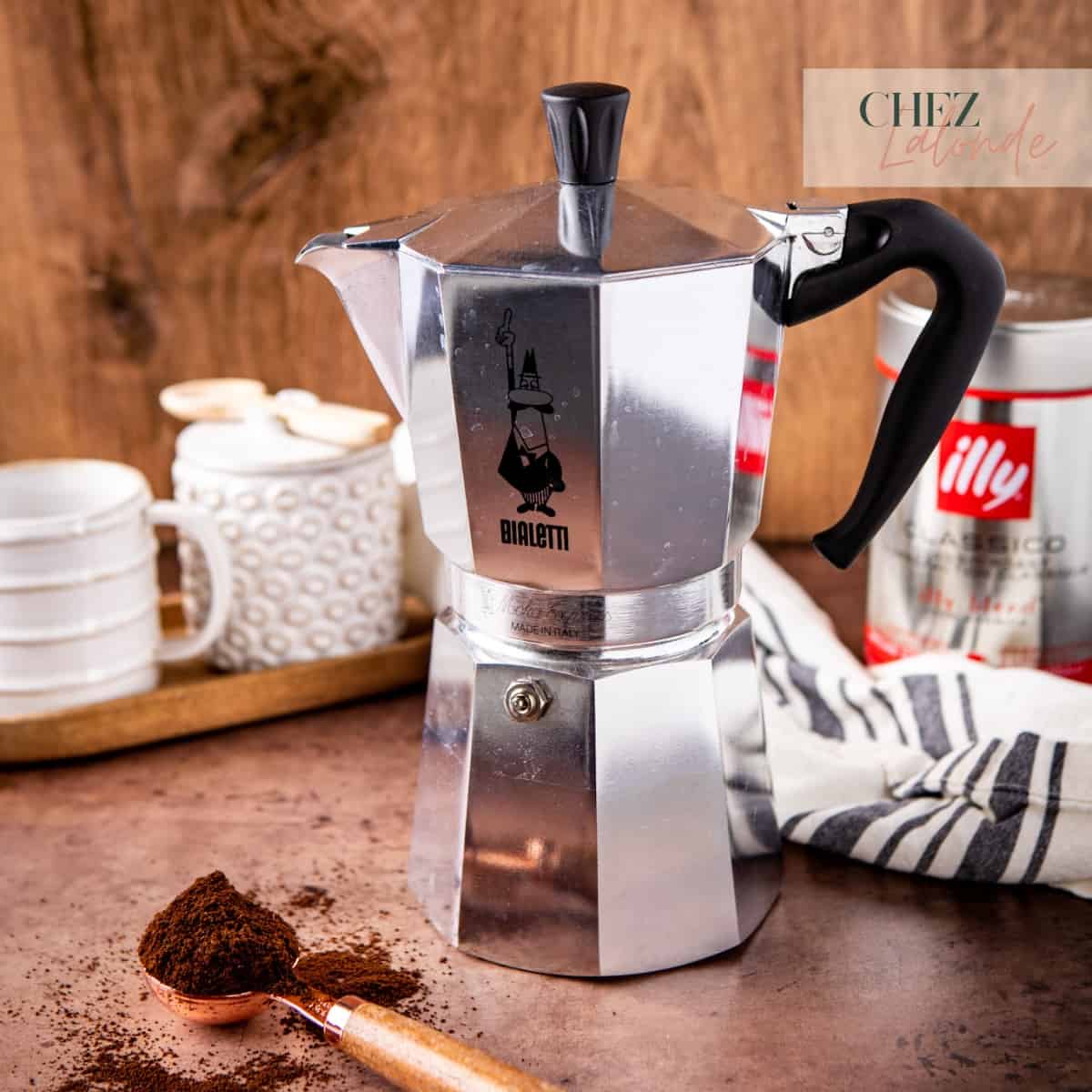








Great list and info. I have almost everything on your list :-), but it’s a mix of Chinese, Japanese, and Korean essentials.
Thank you so much! This is just the beginning, as you said Asian sauces and condiments is a never ending list. Haha! I am thinking to add another post about Mediterranean spices in the near future too. I feel like these posts can help my readers understand how to use these ingredients and what they are for. Thank you again for checking out my blog and your support!